ASalute to Agriculture

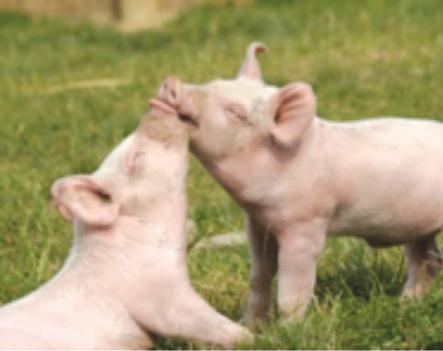








of the Plains The Heartbeat

February28, 2014











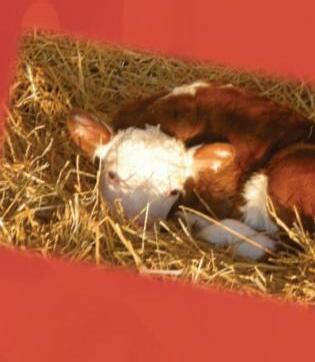
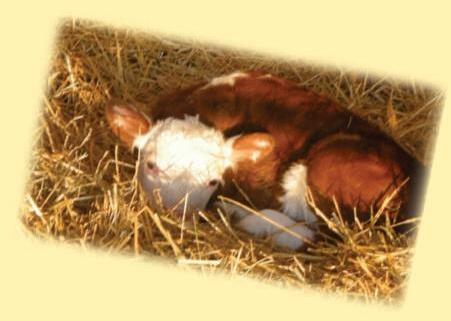



FORT MORGAN Where All The Farmers & Ranchers Come To Shop SALUTE TO AGRICULTURE •FEBRUARY 28, 2014 •3
By Julie Tonsing Publisher
My heartisfull of love and pride as we debut our inaugural “A Salute to Agriculture–The Heartbeat of the Plains.”
Agricultureisabundant on the plains of Northeast Colorado as nearly everything we do is related to, or reliant on, agriculture. From the foods we eat, to the clothes we wear,tothe gas in our vehicles, even to the various types of entertainment we enjoy,agricultureplays a partinall we do.
We aresolucky to live, work and play in Northeast Colorado. Whereelse can you wake to abeautiful blue sky,enjoy the most magnificent sunrise and sunset ever, brilliant star-filled nights and glance around to view the various livestock animals grazing in the pastures and the waves of grain gracefully flowing in the wind?
Igrewupasacountrygirl. Iwas afforded the most wonderful childhood! My parents made certain that my sister and Ihad all of the luxuries they could, though I suppose therewas atime when we had to ride the bus or couldn’t just walk to the park like our city friends could. We might not have recognized that as aluxury. And now that Mark and I have moved to the country, I again remember my love of the clean air,the locusts chirping at night, the wide open spaces and so much more.
While on the farm, we also got to help move gated pipe, ride horses whenever we wanted, drive in the pastures when we could hardly see over the steering wheel, ride in the tractor with Dad or in the truck with Mom during cornharvest. Shoot, we even got to have our own baby pigs thanks to our Grandpa
and his purchase at the local sale barn. The only thing he didn’t provide was corrals to keep them in. To this day,I can remember as vividly as the day it happened, chasing those darling little things all over kingdom come in the middle of the night. Irecall they werenot long for a home at Kramer Feedlot as Dad quickly hauled them off to the verynext sale. Well –it was fun while it lasted for Becky and me, though I know for afact, that Dad did not sharethat same sentiment.
Dad –wemiss you so! At 49, you werejust too young to leave us. We weren’t through learning from you or making memories with you.
Thereare so many memories. That’s just one of the most wonderful things of life
on the Plains –the many memories that aremade.
We hope that you enjoy the stories we present and learnmoreabout the every day life of people and organizations involved in agricultureand supportour many advertisers.
The family farmand ranch is the verybest that life has to offer.Read the Farmer’s Creed below and Ithink you’ll agree. Thank you farmers and ranchers –we salute you!
Farmer’sCreed
Ibelieve aman’s greatest possession is his dignity and that no calling bestows this more abundantly than farming.
Ibelieve hardwork and honest sweat are the building blocks of aperson’s character.
Ibelieve that farming,
despite its hardships and disappointments, is the most honest and honorable way a man can spend his days on this earth.
Ibelieve farming nurtures the close family ties that make life rich in ways money can’t buy

Ibelieve my children are learning values that will last alifetime and can be learned in no other way.
Ibelieve farming provides education for life and that no other occupation teaches so much about birth, growth, and maturity in such avariety of ways.
Ibelieve many of the best things in life are indeed free: the splendor of asunrise, the rapture of wide open spaces, and the exhilarating sight of your land greening each spring.
Ibelieve that true happiness comes from watching your crops ripen in the field, your children grow tall in the sun, your whole family feels the pride that springs from their shared experience.
Ibelieve that by my toil I am giving more to the world than Iamtaking from it; an honor that does not come to all men.
Ibelieve my life will be measured ultimately by what I have done for my fellow man, and by this standardIfear no judgement.
Ibelieve when aman grows old and sums up his days, he should be able to stand tall and feel pride in the life he’s lived.
Ibelieve in farming because it makes all this possible.
—Written for New Holland by John Nason and originally published in October 1975
ANote From the Publisher … 4• SALUTE TO AGRICULTURE •FEBRUARY 28, 2014


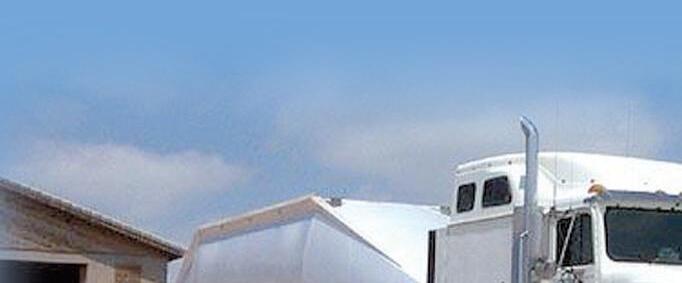


it Page 6 —Colorado Association of Wheat Growers Page 8 —Colorado Egg Producers Association Page 12 —Colorado CornGrowers Association Page 14 —Yearous Cattle Co. Page 16 —Colorado Hay and Forage Association Page 18 —Western DairyAssociation Page 20 —Quail Ridge Dairy Page 22 —Sterling Ethanol Page 24 —Hettinger farm Page 28 —Marijuana production Page 36 —Economics of Agriculture Page 37 —NoTill Page 40 —Niccoli Livestock Page 44 —GraffTurf Farms Page 46 —Hall of Fame Page 48 —Technology Page 50 —Future Farmers of America Page 52 —Amen Angus Page 54 —Centennial Farms Page 56 —NJC rodeo Page 58 —Gentle Spirit Alpaca Farm Publisher Julie K. Tonsing Advertising Consultants Jo Jean Eberly MaynardWeber Peg Peterson EditorialStaff Rachel Alexander DanBarker Jenni Grubbs Jonathan Seib Sara Waite David Wilson Callie Jones SupportStaff JosephinaMonsivais Jovita Gutierrez Kasha Sheets Kaeoni Sonnenberg Duane Miles Our
“Wewill watch out for you, please watch out for us!” Let us know how we are doing,Aulick Leasing Safety Dept. 308-633-4023 We have been on the road again! We have been on the road again! Thank You to the Farming Community!! SALUTE TO AGRICULTURE •FEBRUARY 28, 2014 •5
Where to find
Staff
ILocal wheatproducer CaryWickstrom's field is harvested. Research funded by the Colorado
Committee has created varieties of wheat that thrive in the region.
Colorado Association of Wheat Growers
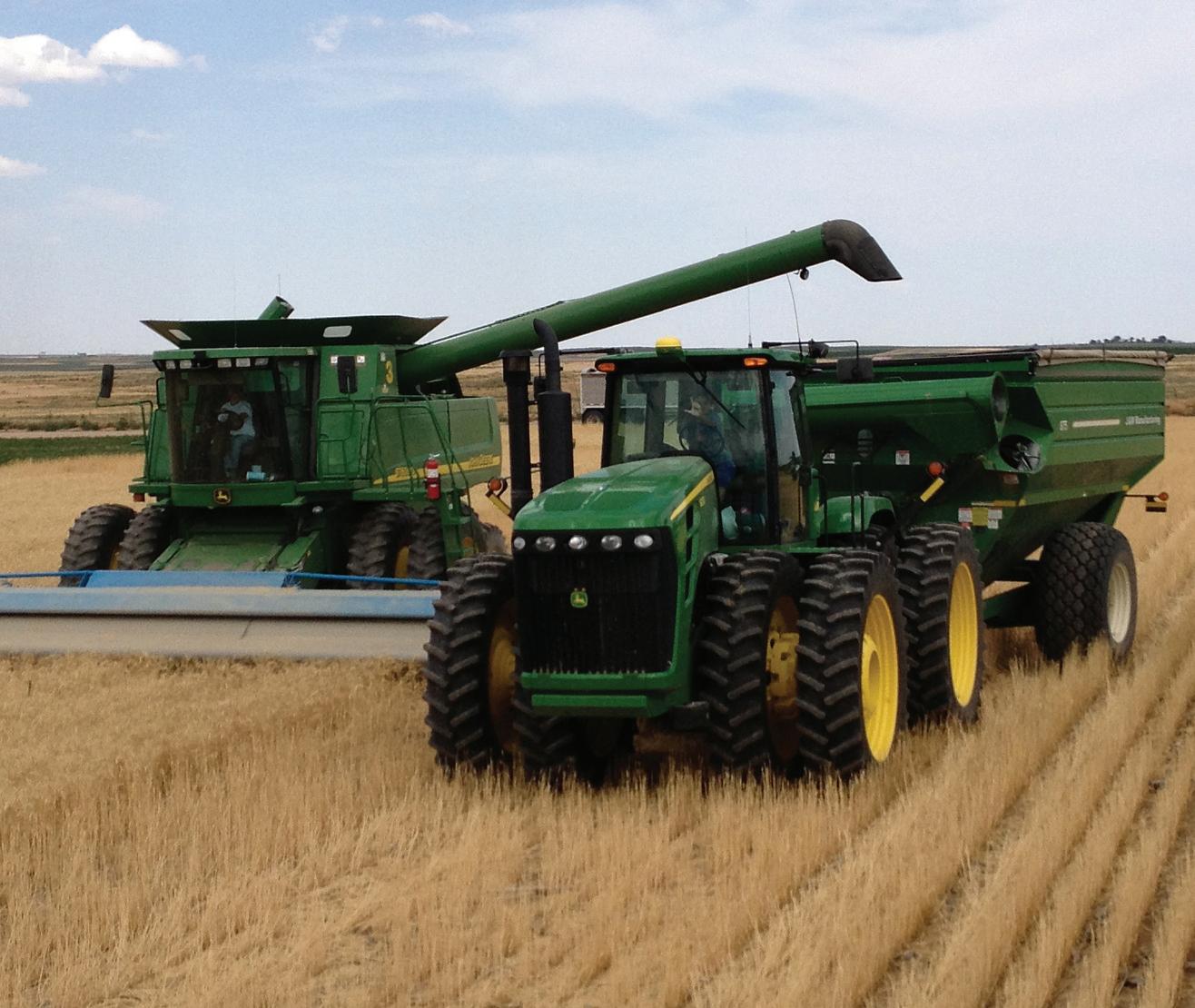
Vote coming for 2-cent assessment Money funds important research
By Dan Barker Times News Editor
The ColoradoWheat Administrative Committee
will have avote on whether
or not to keep the 2-cent per bushel checkoff.
Seven years ago, its members approved raising the
former 1-cent assessment to 2cents, and will vote in March to decide if they want to keep the higher assess-
ment, said Glenda Mostek, director of marketing communications for the Colorado Association of Wheat
Growers.
Those organizations are associated with each other, as is the Colorado Wheat Research Foundation. The 2cents on abushel is See WHEAT, pg.7
Courtesy photo /Fort Morgan Times
6• SALUTE TO AGRICULTURE •FEBRUARY 28, 2014
Wheat Administrative
agood investment, said Cary Wickstrom, awheat grower in Morgan County.Heisa past president and director on the administrative committee, as well as having served on the advisorycommittee. He has also been a member of the CAWG “forever.”
When the state stopped funding wheat research, producers had to step up and fund it with the extra assessment, and it is worth it, he said.
Wheat growers have a good breeding program at Colorado State University, which has come up with successful and hardy varieties of wheat that thrive in Colorado, Wickstrom said. Since the big seed companies con-

sider Northeast Colorado too small amarket to develop seeds for,that research is invaluable, he said. His operation is in northwest Morgan County
The program has also dealt with new pests and has good testing operations, Wickstrom said.
The association has also helped develop the Snowmass white wheat that bakers can use to make whole wheat bread that is like the white bread people enjoy,he said. That helps to overcome the negative publicity about white bread.
Ballots will be sent out to CWAC members for the vote. If members do not receive ballots, they can contact the Colorado Depart-
ment of Agriculturefor them, Mostek said. Good yields areimportant in what has become an international market for Colorado wheat.
About 80 percent of Colorado wheat is exported to places like Japan and other parts of Asia, Africa and Mexico, Mostek said.
CAWG does marketing through U.S. Wheat Associates, which finds those overseas markets, and show customers how to use specific varieties of wheat for the best results, Wickstrom said.
Wickstrom said that wheat prices have been at historically high levels, but have dropped the past couple of years.
Yields weredown at har-



vest last summer,hesaid.
However,that might help with wheat prices, some observers have said. With the U.S. wheat crop suffering last summer,that may push prices up as buyers try to get it.
Looking at the coming wheat growing season, he said that the large amount of precipitation in September kept wheat planters out of the fields, delaying planting, which means the crops did not get established as well as
usual.
Fortunately,the area has decent subsoil moistureto help the crop thrive in the spring, Wickstrom said. Unfortunately,therewas a fair amount of erosion from high Januarywinds, plus erosion in some fields from tumbleweeds, he said.
Contact Times News Editor Dan Barker at 970-867-5651 ext 231 or business@fmtimes.com or follow twitter.com/ DanBarkerFMTime



WHEAT from page 5
Wheat prices have been at historically high levels, but have dropped the past couple of years. Yields weredown last summer. When you arelooking for an ag lender you can trust… We’rethe answer. 520 Sherman St., Fort Morgan, Co 80701 (970) 867-3319 www.fmsbank.com CALL TODAY! 1-800-645-6943 Service Center: 500 Main Street, Fort Morgan, CO FC-0000374516 SALUTE TO AGRICULTURE •FEBRUARY 28, 2014 •7
Colorado Egg ProducersAssociation
Chickens’ welfare vital to producers
Association has code of conduct
By Dan Barker Times News Editor
Chickensthat produce eggs for human consumption arewell treated and the Colorado Egg Producers Association works to make surepeople know it.
Consumers should under-
stand that chicken and egg producers in Colorado do all they can to ensurethe welfareoftheir animals, said TerryTormohlen, who has a large chicken production facility in Morgan County and is the secretary-treasurer of CEPA.

“It’s detrimental to us if we
don’t,” he said, because healthy animals means healthy profits.
Tormohlen grew up in the egg business, and his operation produced eggs —but today his operation raises hundreds of thousands of young chickens called “pullets” for Boulder Valley Poultry, which uses those chickens to produce eggs.
He said that when he
hears about instances of animal cruelty,he“cringes,” since he does not treat his animals badly and smartproducers treat their chickens well.
Sometimes people think their food is only safe if they buy it at alocal farmers market, but the eggs from commercial operations areusually safer for the consumer, Tormohlen said.
The Colorado Egg Producers Association has “an animal code of conduct,” he said.
If an association member was found to have acruel operation, and the association finds out, that member would be chastised or thrown out of the organization, Tormohlen explained. Raising chickens is not just asource of profit for See CHICKENS, pg.9
Dan Barker/Fort Morgan Times
8• SALUTE TO AGRICULTURE •FEBRUARY 28, 2014
TerryTormohlen raises hundreds of thousands of chickens in Morgan County,which makes him the perfect judge for the Morgan County Fair poultrycontest.
CHICKENS
Tormohlen, and that profit is not that large, he noted.
He said he likes and is good at what he does, which is the biggest motivation for him.
Tormohlen raises two groups of chickens at atime, with one group of the youngest birds and another group of relatively older birds at the same time.
He works hardand takes the time to give them the proper space, food, water and shelter,hesaid. He creates the optimum conditions for them to thrive.
“Their environment’s perfect,” Tormohlen said.
The birds have access to food and water 24 hours a day and his barns have good ventilation and agood environment, he said.
Huge swamp coolers make surethat the chickens
from page 8


do not suffer from heat during the summer,for instance.
Tormohlen also makes surethat they have the proper vaccinations, and he does not let people walk around his farmsothey will not bring in bacteria or viruses.
Chickens areprotected from the E. coli bacteria by not having them near their feces, he said.
Also, because the younger chickens aremorevulnerable to disease, Tormohlen makes surehis employees always work with them beforethe older group. This prevents the spread of disease for one to another
The environment in his barns is constantly monitored. He and his workers get out to the barns at 5a.m. to make surethe birds have everything they need, and to
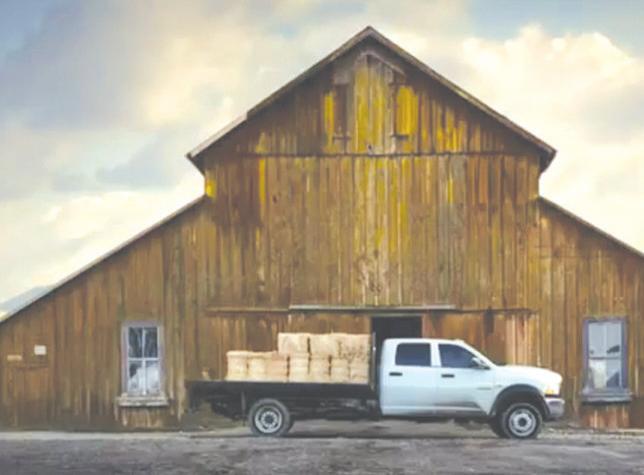
clean the areas beforegoing on to maintenance and repair each day
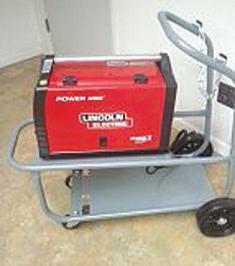

Then he goes back to check on them again.
His chickens go through about 14 to 15 tons of food each day,Tormohlen said. While chicks eat little, 18month-old chickens eat alot.
All of his chicken feed comes from the Roggen elevator and is specifically designed to meet the needs of his flocks.
His operation makes up quite an investment, with three barns, two full-time employees and alarge parttime labor force for doing things like giving vaccinations, which requires handling each birdfour times. Since the birds must be healthy and kept safe, the employees receive specialized training, Tormohlen
emphasized.
Tormohlen is also adirector on the boardofthe Colorado Foundation for Agriculture, which is partofthe education department within the Colorado Department of Agriculture.
Abig partofthat group’s job is to help educate people about the fact that food does not come from the grocery store, he said.
CFAalso works hardto protect the safety of the food supply while offering it at affordable prices, Tormohlen said.
When the egg producers association was founded 25 years ago, members wanted
to build the demand for eggs, but that evolved to education about wherepeople’s food comes from, said association President Jerry Wilkins.
CEPAmembers produce about 1billion eggs each year from about 4million hens, he noted.

During that production, members ensurechickens are“treated with respect and dignity,” he said.
Contact Times News Editor Dan Barker at 970-867-5651 ext 231 or business@fmtimes.com or follow twitter.com/ DanBarkerFMTime




It’s detrimental to not follow standards because healthy animals means healthy profits. we Are now Selling welding SupplieS And SAfety equipment 20343 US Hwy 34 FortMorgan, CO 970-867-9353 www.BuchananWelding.com Stop in…… ASk for Amy to Show you Around FR Clothing Welding Supplier Snap-on Tools importNEWANd ANtServiceAvAilAble! Wolf Auto Center 310W.Platte Ave. fort Morgan 970-542-Auto www.wolfauto.com To The farmer in all of us SALUTE TO AGRICULTURE •FEBRUARY 28, 2014 •9
This is aFarmer This is aFarmer
(Author Unknown)
Farmers are found in fields plowing up, seeding down, returning from, planting to, fertilizing with, spraying for and harvesting it. Wives help them, little boys follow them, the Agriculture Department confuses them, salesmen detain them, meals wait for them, weather can delay them, but it takes Heaven to stop them.
When it’stime to buy anew truck he can quote from memory every expense involved in operating the farm last year,plus the added expenses he is certain will crop up this year.He instinctively converts the price to the bushels of corn he must produce in order to pay for it at today’sprices.

Afarmer is ashirt-sleeved executive with his home his office; ascientist using fertilizer attachments, apurchasing agent wearing acap; apersonnel director with grease on his hands, anutritionist with aconcern for energy values, animals and antibiotics. As aproduction expert he’sfaced with asurplus; while as amanager he’salways battling aprice cost squeeze handling more capital than most of the businessmen in Main Street.

He’snot much for droughts, ditches, disease, weeds, experts, the four-day week, helping with housework or bugs. Nobody else is so far from the telephone or so close to God. His greatest fringe benefit is that his family shares his business life. He’shimself; you’ll never find him trying to appear as something he’snot.
Who else can remove all those things from his pockets and on washday still have overlooked five washers, arusty bolt, three feed pellets, the stub of alead pencil, and an old receipt.
Afarmer is both faith and fatalist-he must have faith to continually meet the challenges of his capacities amid every present possibilities that an Act of God (a late spring, an early frost, blight, tornado, hail flood, or drought) can bring his business to astandstill.


He is privileged to see the sun rise through smog-free air and to walk under open sky.His closeness to nature strengthens his faith. By his hand alone he produces enough to feed so many it makes his production capacity the envy of the rest of the world.
Youcan reduce his acreage, but you can’t restrain his ambition. Even when his spirit is low and things seem bleak, he can be recharged anew when he hears: “The Market Is Up.”
10 • SALUTE TO AGRICULTURE •FEBRUARY 28, 2014
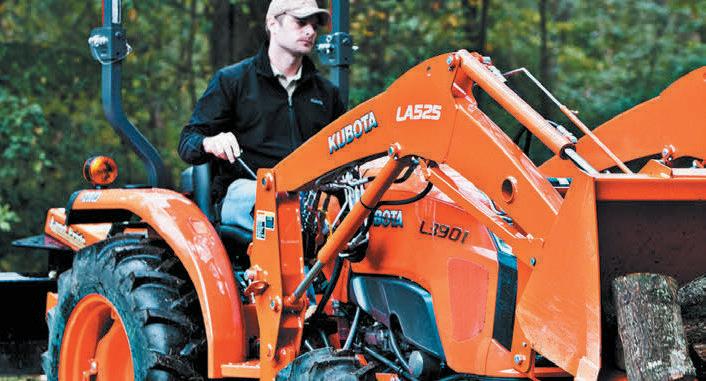


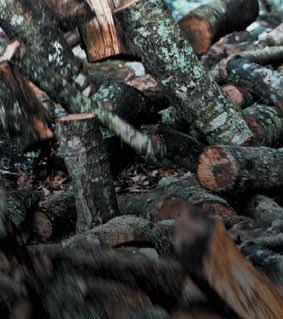










$0Down, 0%Financingup to 60Months* A.P.R. Savetoday.Startsomethingbigtomorrow withyourLSeriescompacttractor! 15447 HWY 34, FORTMORGAN,CO80701 (970) 867-5669 *$0 down, 0% A.P.R. financing for up to 60 months on purchases of new Kubota BX, B, L, M, TLB and ZP,DM, RA and TE Hay Tools equipment is available to qualifi ed purchasers from participating dealers’ in-stock inventorythrough 3/31/2014. Example: A60-month monthly installment repayment term at 0% A.P.R. requires 60 payments of $16.67 per $1,000 financed. 0% A.P.R. interest is available to customers if no dealer documentation preparation fee is charged. Dealer charge for document preparation fee shall be in accordance with state laws. Inclusion of ineligible equipment may result in ahigher blended A.P.R. Not available for Rental, National Accounts or Governmental customers. 0% A.P.R. and low-rate financing may not be available with customer instant rebate offers. Financing is available through Kubota Credit Corporation, U.S.A., 3401 Del Amo Blvd., Torrance, CA 90503; subject to credit approval. Some exceptions apply Offer expires 3/31/2014. See us for details on these and other low-rate options or go to www.kubota.com for more information. 18875 County Road 24, Sterling,CO80751 (970) 521-9999 WICKHAM TRACTOR COMPANY SALUTE TO AGRICULTURE •FEBRUARY 28, 2014 •11
Charlie Bartlett represents area growers
By Dan Barker Times News Editor
Charlie Bartlett is the representative to the Colorado CornGrowers Association for producers in Morgan and Logan counties.
He was elected into that position at January’s annual CCGA meeting in Greeley.
But Bartlett is not new to serving in agricultural groups. He was recently the president of the Colorado CornAdministrative Committee and is the current chairman of the Colorado Agricultural Water Alliance. Athird-generation farmer,hehas runhis small operation near Merino growing corn, alfalfa, wheat and beans —but mostly corn —since 1975, he said.
He is sold on the value of the help organizations such as CCGA offer to growers, Bartlett said.
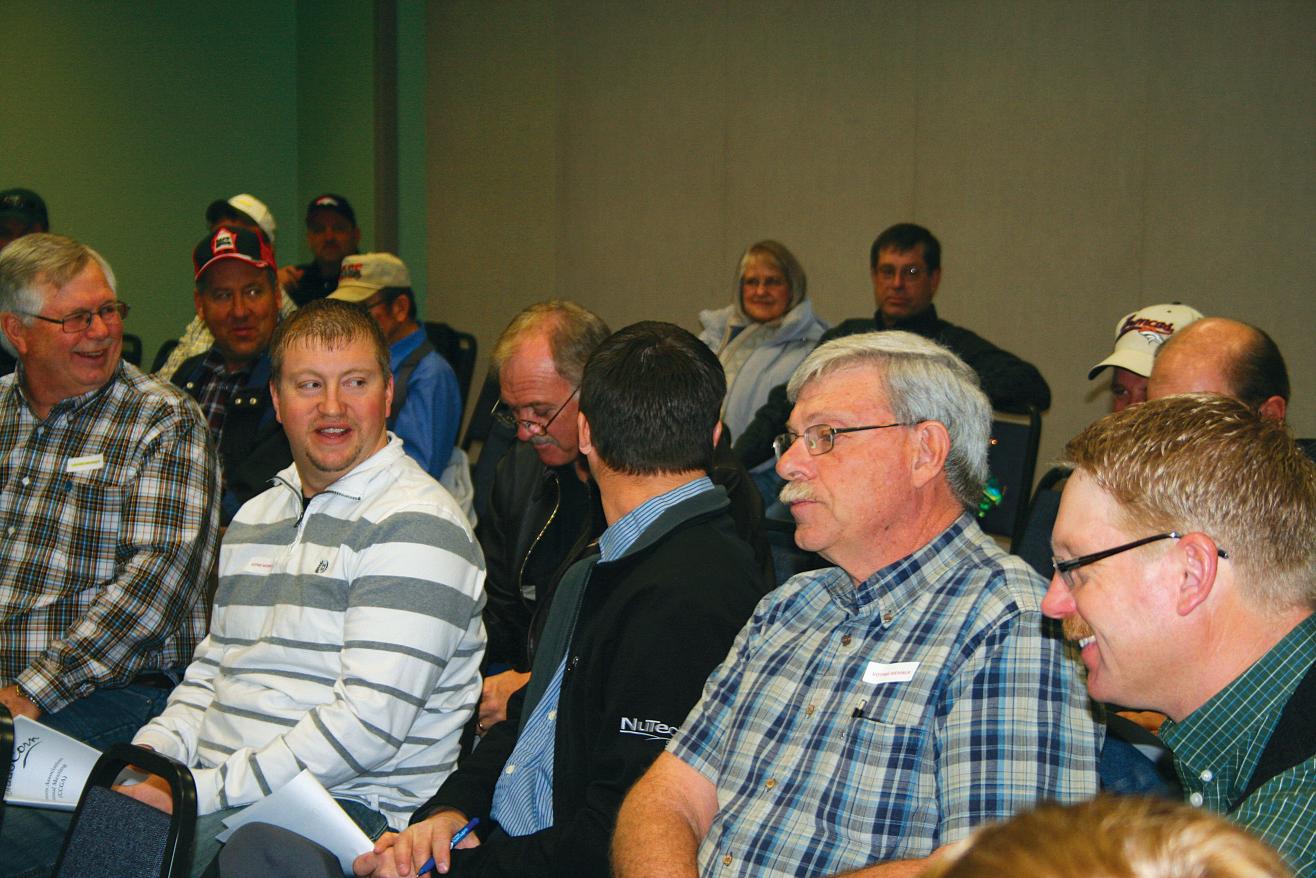
Not only does the cornassociation, for instance, represent its members at the state legislature, but the administrative committee directly helps growers with moreefficient, sustainable production technology, including better strains of corn, he said.
In fact, much of the funding for the administrative committee goes to research and marketing of corn, Bartlett said. The corn association assists the corncommittee to decide what kinds of research would help growers and what kind of marketing to do.
Amain line of research is helping to produce better corn, he said.
One line of research is looking at creating astrain of cornthat would have three roots, which would mean it could survive with less rainfall and might need less fertilizer,Bartlett said.
The idea of research is to maintain corn See CORN,
Colorado CornGrowersAssociation
pg.13
Dispelling ethanol myths
of the job
just part
12 • SALUTE TO AGRICULTURE •FEBRUARY 28, 2014
Dan Barker /Fort Morgan Times CharlieBartlett, second right, waselected to represent Morgan and Logan counties in the Colorado CornGrowersAssociation. He is also partofother organizations that promote agriculture.
growers’ productivity in varying times and conditions, Bartlett said.
Sometimes the association also works on other projects.
Recently,ithelped the state to monitor wells along the South Platte River when funding was low due to the recession, he said.
It was important to get that data, Bartlett stressed.
CCGA is also working to keep the cornethanol mandate in the Environmental Protection Agency’s Renewable Fuel Standard.
Some U.S. senators want to eliminate that mandate, citing impacts on the cost of food and animal feed.
However,the U.S. ethanol industryonly uses about 3 percent of the global supply of grain, CCGA says.
“The real costs of putting food on the shelf aretransportation, processing and packaging, all costs driven by oil,” an association pamphlet says.
It is important to educate the public on the real facts, dispelling the myths that are out there, Bartlett said.
Most corngoes to feed cattle, he noted.
Thereare those who say that it takes moreenergy to make ethanol than it produces, but that is not true, Bartlett said.
Arecent U.S. Department of Agriculturereport showed that ethanol creates morethan twice the amount of energy than is used to produce it, CCGA says.
In 2011, the ethanol industrycontributed $42.4 billion to the nation’s gross domes-

tic production, and added $30 billion to household incomes in the United States, the association says.


By creating asteady market for corn, ethanol helps lower federal farmprogram costs.

Currently,CCGA is working to get the state to help gasoline stations with the infrastructuretooffer various levels of ethanol in their fuel, Bartlett said.
In Colorado, all gasoline has 10 percent ethanol in it, but blender pumps can offer up to 85 percent ethanol, and many areinterested in the 30 percent blend, he said.
CCGA also tries to represent agriculturetothe state legislature, since agricultural areas have so little representation in the Colorado House of Representatives and the



Colorado Senate, Bartlett said, although the association does not take specific positions on legislation.
The ag water alliance is working closely with state water officials to give input for astate water plan, he said.
Moving water away from agricultural use to municipal use can dryupwhole com-
munities, Bartlett noted.
The alliance is actively working with municipalities to find ways to keep water rights on farmland while still providing water to cities, he said.
Contact Times News Editor Dan Barker at 970-867-5651 ext 231 or business@fmtimes.com












TheHe rtbe tofthePl i s ASAL OGRICUL A SALUT TE O AGRICULTURE UTE TO


At Bank of Colorado, we believe our job is morethan banking–it’sbeing afriend, a neighbor,and alink in the community.That’swhy we’resharing the stories of the places we call home. From businesses to farms to families, it’sthe communities we’reapart of that make us who we are. See the stories at WhyCommunityMatters.com.

CORN from page 12
THE WA YB ANKING SHOULD BE
One line of research is looking at creating astrain of cornthat would have three roots, allowing it to survive with less raifall and, perhaps, with less fertilizer.
BRUSH 301 Clayton St, 970.842.2844 FORTMORGAN 100 E. Platte Avenue, 970.867.9497 STERLING 131 W. Main St. 970.522.3333
SALUTE TO AGRICULTURE •FEBRUARY 28, 2014 •13
Yearous: Staying ‘grounded’ key for helping produce best beef
By Jenni Grubbs
Times Staff Writer
MORGAN COUNTY
Duane Yearous does what he can to stay grounded.
While the Morgan County cattleman sometimes finds himself caught up in the lat-
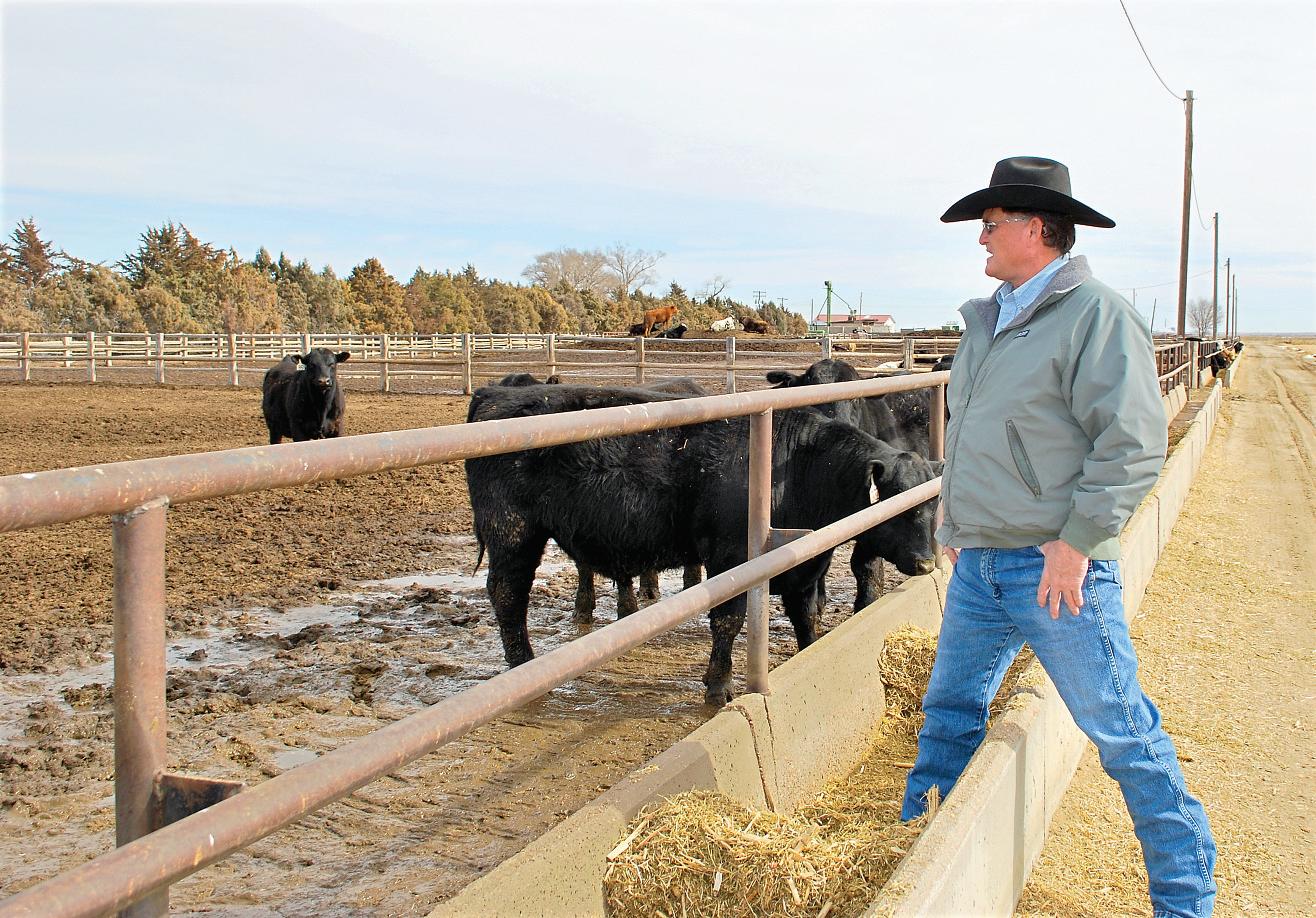
est trends and fads for raising seed stock for commercial beef operations, he knows that his main goal needs to be “finding the most efficient way to produce” the animals that lead to profits for those beef companies.
He remembers his uncle, John Yearous, telling him as achild that thereare “two kinds of people in the cattle business: those who are humble and those who are about to be.”
Yearous Cattle Co., located southwest of FortMorgan, is
afamily-run operation that raises 250 mother cows and their babies, with 75 percent registered Angus for seed stock and 25 percent the commercial animals that he calls the “bread and butter of the cattle industry.”
“Everything focuses
towardthe commercial,” Duane said.
Family operation
Hisgrandparents, who wereofGerman-Russian descent, came to Morgan County in 1947 and settled on the north side of Fort See BEEF, pg.15
Cattle
Jenni Grubbs /Fort Morgan Times
14 • SALUTE TO AGRICULTURE •FEBRUARY 28, 2014
CattlemanDuane Yearous looks out over the development lot at Yearous Cattle Co. southwest of Fort Morgan holding his bulls that likely will be sold to commercial producers. Yearous owns and operates the cattle farmwith help from his mother,brother,two brothers-in-law, who both are veterinarians and ahired hand, as well as his nephews and nieces, when theyare in the area.
Morgan. They werecropfarmers and then cattle feeders.
“We’ve transformed into the cowcalf production side of it,” he said. “Weare in it from conception to consumer,pasturetoplate.”
While Duane is the primarydecision-maker at the cattle farm, his larger family is still verymuch apart of it.
“Mom is still involved,” he said of matriarch Sandra Yearous. “She’s the glue that keeps everybody lined out. She keeps us grounded.”
His brother,Kent, helps runcattle, and his two brothers-in-law,who are both both veterinarians living in the Kersey area and practicing in Greeley,pitch in their services.

“I couldn’t be doing what I’m doing without additional help,” Duane said.
He also has one full-time hired hand, Larry Walker,and when his nephews and nieces visit, they usually will help on the farm, he said.
For example, his nephew Austin had President’s Day offfromschool, and he headed to Yearous Cattle Co.
“That’s their escape,” Duane said. “Ultimately,mygoal with this is to leave it to the nieces and nephews and leave it going on.”
And like with most family farms, there’s always something to do, whether it’s dealing with the hay or feed corn, tending to animals, cleaning or whatever else pops up.
But eventually,“everything goes back into the cattle side of it,” Duane said.
Gettingtechnical
Becausehedeals in raising the cows that will lead to lots of other beef cattle, Duane knows he has to keep on top of what the industryand its customers want.
“Wehave to take the science that’s out thereand make it apply to the product that’s needed,” he said. “It’s not an entitlement to be aseed stock producer.It’s aprivilege to be able to put the science we have into the seed stock.”
Thinking like that is partofhow he stays grounded, he said.
But he points out that thereare always changes in demand for certain things related to the seed stock.
“We’reaverychain-related business,” he said. “We’reonly as strong
as our weakest link. Thereare so many areas we have to go through, and the target is amoving target. We’realways adjusting to address current needs.”
One thing that is changing the way Duane does business is the globalization of the market for beef.
“It’s not what it was 10 years ago,” he said. “Everything is global and transparent. Our exportmarket has increased so much because foreign countries have gotten ataste of American beef, and they like it. We’ve extended our product as far as Russia, but our best customer base is right here—our beef and commercial bull customers.”
Duane knows how important the seed stock side of his business is to the overall industry.
“People just want to get out and calve the cows” and not have to think about the the genetic side of it, he said. “They want to rely on how we can make it moreefficient for them. HereatYearous Cattle Co., it’s Angus. Our customers come to us for Angus genetics.”
He said alot of money and research had gone into making certified Angus beef “the most branded breed” both domestically and worldwide.
And it’s agood time to be in the cattle industry.
“We’reseeing all-time high (beef) prices at the counter,” which he said was good to see with recent droughts. “Demand is up 2percent, which tells you people want the product.”
But that means that cattlemen have to work even harder to ensure the product will be agood and safe one for consumers, as well as producing the animals in “a safe, healthy environment.”
“The true cattle producer cares for the cows’ environment and well-being,” he said.
Still, it all goes back to the end result: the beef.
“These cattle arefed abalanced diet,” Duane said. “Wewant to produce ahigh-value protein for the consumer.”
That’s partofwhy he has invested in scientific technology that allows for moremarbling in the beef his cattle produces, both as seed stock
See BEEF, pg.61
BEEF
from page 14
SALUTE TO AGRICULTURE •FEBRUARY 28, 2014 •15
Colorado Hayand Forage Association
Quality amust for hay growers Producers should build relationships
By Dan Barker Times News Editor
Althoughlivestock feeders have often worried about the cost of alfalfa hay over the past few years, today hay producers must worry about the price for livestock producers.
In fact, the market is soft for hay right now,because livestock growers have found alternatives to hay, such as mixing remnants of cornafter the harvest with distiller’s mash, which has replaced alot of the hay consumption, said Don Leonard, secretaryand past president of the Colorado Hay and Forage Association.
Leonardgrows alfalfa
north of Brush and near Iliff, and has been in the hay industryfor about 40 years, he said. He moved to Morgan County in 1993.
Hay is aperennial plant with afour- to five-year lifespan, he explained. Often, it is harvested four times a year,although the first year offers only limited production and agrower usually only gets three good years out of one planting.
Any yield over 6tons an acreisconsidered agood year,Leonardsaid. However, it has been hardtoget yields like that the past few years due to drought and dryconditions.
With the drought, growers werelucky to get 5tons per acre, he said.
Leonardhas some advice for hay growers who want to sell their crops.
In the current market, it is important to build arelationship with alivestock producer if the idea is to sell to feedlots or dairies, Leonard said. Dairies arethe biggest market for hay,although those who raise horses, sheep and beef cattle also use it. Similarly,itisimportant to build relationships with those marketing hay,he said.
CHFAhelps growers to network, look for customers and trade information, Leonardsaid, as well as addressing issues at the state and federal levels.
The association offers alot of education on production methods and good varieties of alfalfa, he said.
In Colorado, hay is the thirdlargest crop, and locally it can be the second largest crop during some years.

Many agricultural producers plant and harvest at least alittle hay,even if that is not their primarycrop, Leonard noted.
It is vital to know the market, because the days of just
piling hay up and waiting for acustomer areover,Leonardemphasized.
Having quality alfalfa is a big factor,hesaid.
That begins with fertilization, weed control and harvesting at the right times, Leonardsaid.
It is also crucial to store the crop properly,such as in ashed or at least covering it.
Therewereyears when hay growers could sell any hay.
“That time has ended,” Leonardsaid.
Contact Times News Editor Dan Barker at 970-867-5651 ext 231 or business@fmtimes.com or follow twitter.com/ DanBarkerFMTime
Dan Barker /Fort Morgan Times
Dairiesare the big consumersofalfalfa hay. To keep the quality of hay, producersand usersare advised to keep it covered.
16 • SALUTE TO AGRICULTURE •FEBRUARY 28, 2014

SALUTE TO AGRICULTURE •FEBRUARY 28, 2014 •17
WesternDairyAssociation
Giving dairy farms agood name
By Jonathan Seib Times sports writer
The WesternDairyAssociation is agreat resource for the young, those looking to learnmoreabout dairyand their operations and experienced farmers alike.

“WesternDairyAssociation is anon-profit, dairy farmer-funded organization that works to promote dairy products as partofahealthy lifestyle. We arepassionate about developing, implementing and leading health
Group offers resources for local farmers
programs for children and schools, science-based nutrition, community and consumer education and, of course, dairyfarmfamilies, dairyfarmbest practices, dairycows and dairyfood products,” is how it introduces itself on its website.
The WesternDairyAssociation is located in Thornton and services three states: Colorado, Wyoming and Montana.
Partoftheir effortiseducating people about the importance of dairyand dairyproducts in their diet.
In that effort, the Western DairyAssociation has three full-time nutritionists on staff. They head up the “Fuel up to play 60” campaign. This program is in collaboration with the National Football League’s “Play 60” program, which encourages kids to play outdoors for 60
minutes everyday to promote health and exercise.
The “Fuel up” program teaches kids that balanced nutrition is avital partofa healthy lifestyle and makes you better suited to play up to your best ability
The WesternDairyAssociation is farmer funded, and to that end, on top of promoting the health benefit of lowfat dairyproducts, works with farmers.
The biggest way that they do that is the Local Dairy Checkoff.
Dairycheckoffisfunded, directed and represents the interests of these dairyfarmers –promoting dairysales through partnerships nationally and locally and by funding research and programs to promote the health benefits of dairyfoods.
“It is our job to make sure consumers know that their milk and dairyproducts come from agood place,”
See DAIRY, pg.19
Courtesy Photo /Fort Morgan Times
18 • SALUTE TO AGRICULTURE •FEBRUARY 28, 2014
TheWesternDairyAssociation offersresources and information packets to help out farmersinavariety of ways.
say Arley George, chairman, and Cynthia S. Haren, President and CEO, in awritten statement included in information packets available to farmers and others interested in the WesternDairy Association.

They also offer akit to local dairyfarmers to make farms “tour” ready
The WesternDairyAssociation website, which is newly “refurbished” having been redone in the last year, includes lots of links to educate people about dairy farming and what benefits it offers.

One of the most unique things it offers is the “Meet a dairyfamily” portion of the site.

This featureincludes brief profiles on real-life dairy farmers and photos from their farmand the families that runthem. Families from all three states areincluded in the profiles, including ones from right hereinMorgan County.The Kraft family from FortMorgan and the Dinis family from Wiggins, both have profiles on the site.
The site also contains explanation on how milk goes from cows to your table, recipes that include and featuredairyproducts, and alot of information about dairyinyour diet. It also offers information on farmsustainability and a quarterly R.O.I. —Return on Investment —newsletter. These can be obtained on the website or in hardcopy. For moreinformation on the WesternDairyAssociation, visit their website at www.westerndairy association.orgorcall 720-356-3180.

Contact Times sports writer Jonathan Seib at 970-867-5651 ext. 228 or sports@fmtimes.com





•Cows can smell things up to 6miles away
•The average U.S. dairycow produces 144 8-ounce glasses of milk everyday
•Everyday,acow produces 17 gallons of manure

•Cows need lots of water to drink
—abathtub’s worth each day.
•Notwo Holstein cows have the same spots
•Cows can see almost 360 degrees around themselves and see all colors except red
Source: WesternDairyAssociation

DAIRY from
page 18
•Duct Work Cleaning •Hot Water Heat
Radiant Heat
Tube Heat •Geothermal Heating &Cooling •Solar Water Heating Systems •Water Heaters •Tankless Water Heaters •Saltless Water softeners •Septic systems •Drainline Video Inspection & Location •Commercial •Residential •New &Remodel •Sales •Installation •Repair Licensed-Bonded-Insured-FREE Estimates Plumbing, Heating &Cooling 1205 East Burlington Ave Fort Morgan CO 80701 970-867-5783 If You Need It… We Have It 1001 W. Platte Ave., Fort Morgan,CO 970-867-2449 StoreHours: Monday-Saturday, 7a.m. -6p.m. SALUTE TO AGRICULTURE •FEBRUARY 28, 2014 •19
•In-Floor
•Infra-Red
Fourth -generation dairyfarmer carries on
family TRADITION
By Jenni Grubbs Times Staff Writer
MORGAN COUNTY —Asakid, Mary Kraft thought she would want nothing to do with dairyfarming when she grew up.
“The entiretime Iwas growing up, Ihad one vacation,” she said, since her father did not want to be away from the cows on their family dairy.
She was sureshe would want to leave the dairyand its “slave labor.”
Yetonce she did grow up, she found that afamily-owned dairywas exactly what she wanted to do after all.
“This is something Ireally enjoy,” the owner of Quail Ridge Dairysoutheast of
FortMorgan said recently while guiding a tour of the facility.
But Kraft decided that her dairywould be rundifferently from her experiences as achild.
“I decided Ididn’t want to be doing dairy the way it was always done,” she said.
While the operation Kraft and her husband, who is from South Africa, built started out small, it has grown to amuch larger moderndairywith at least 75 full-time employees.
“The whole facility is made up so everything can be happening at the same time,” she said. “This facility is pretty state of the art.”
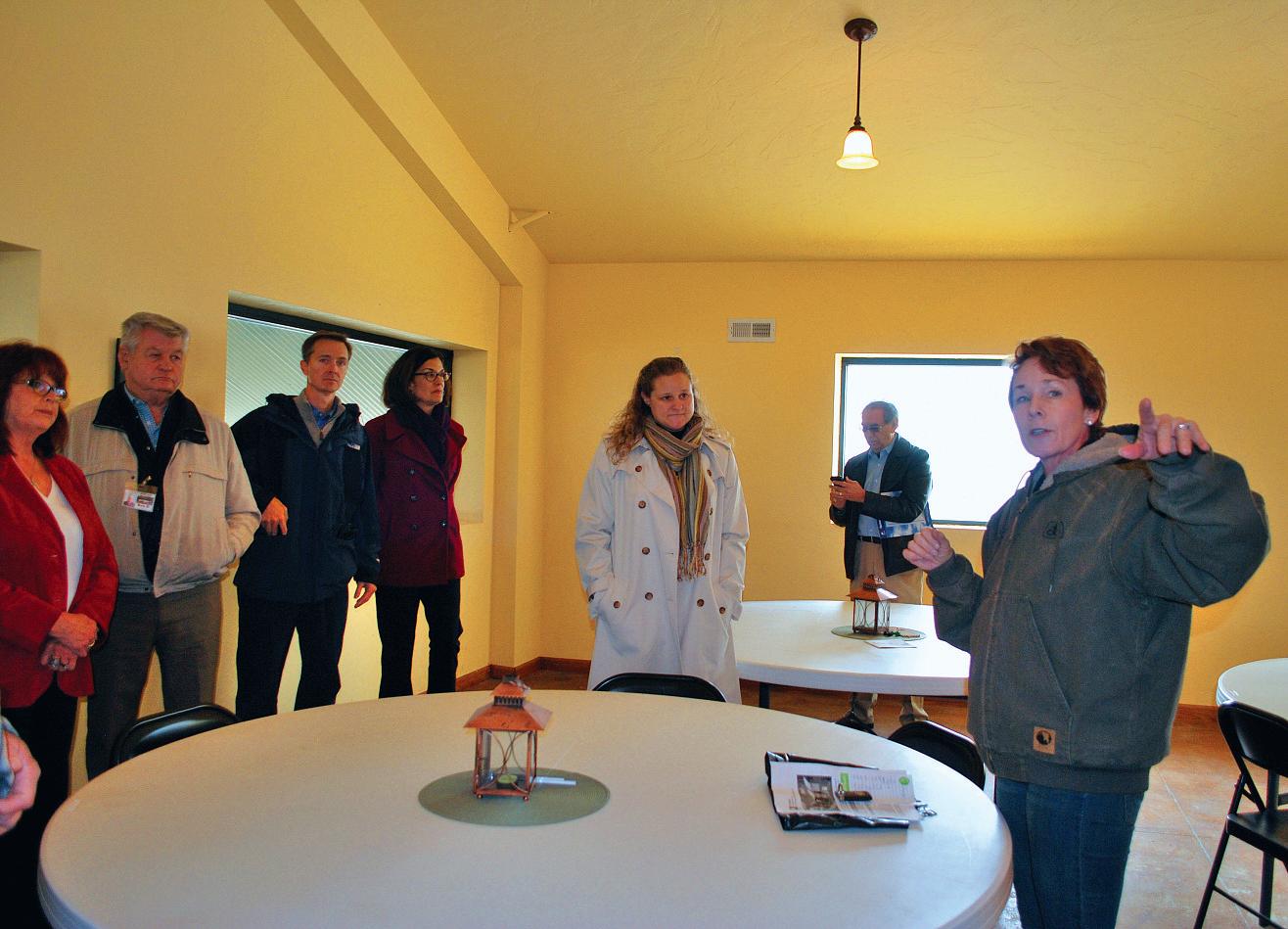
See KRAFT,
Dairy
pg.21
Jenni Grubbs /Fort Morgan Times
20 • SALUTE TO AGRICULTURE •FEBRUARY 28, 2014
QuailRidge Dairyowner MaryKraft, right, tells agroup of state officials about her dairysoutheast of Fort Morgan during atour in January2014. Kraft explained the technologyand renovations made over the yearsatthe dairytoensure the cows are healthyand produce quality milk and lots of babycows in the on-site calf nursery.
Quail
Ridge Dairy employs more than 75 people
Not long ago, they renovated the facilities, which include free-stall dairybarns with no set stalls or pens for each cow.
“The cows just flow through,” she said. “They arefreetogooutside or stay in.”
The high, pitched roof in the dairybarnleads to hot air getting sucked out, which cools the facility and takes away afair amount of the natural foul smell, too, she said.
“We’realways looking for ways to keep the cows and workers cool,” she said. “The pitched roof helps.”
When it’s really cold, features like curtains and closed doors then help keep warmair in, which helps prevent the cows from getting frostbite on their teats, Kraft said.

The dairybarnalso is set up to fully recycle the waste
from the cows, with solids heading to the composting facility and liquid waste collected for use on the hay fields as fertilizer.
“The whole thing we’re trying to accomplish is super-relaxed,” Kraft said, a contented smile on her face.




The cows areout of their free-stall barns for milking for about 30 minutes aday, she said.

When it’s time for milking, they head to that facility in what appears to be an orderly fashion, but Kraft insists they arenot trained.


“We’redealing with animal
behavior,” she said, indicating that the path the cows take for milking allows them to follow their natural instincts.

Quail Ridge Dairyships out six to seven loads of milk on semi-trucks everyday, which all heads to the nearby Leprino Foods cheese plant within 20 minutes of being harvested from the cows, Kraft said. Therealso arealot of baby calves at the dairy, as that’s an essential partof being able to consistently milk the cows.
See KRAFT, pg.64
Jenni Grubbs /Fort Morgan Times
QuailRidge Dairysoutheast of Fort Morgan has an observation and conference room that looks out over where the cows are being milked so visitorscan watch as it’shappening.Milking the cows with them facing away from the workersinthe center aisle is better because the animals kick forward, dairyowner MaryKraft said.

KRAFT from page 20
“We’retrying to make surethe animals and people have the best quality of life possible.”
Featuring Territorial Rodeo Updates, Horseman’sCorner,Market Updates, Agri ~Shop, Agri ~Talk along with complete Ag and local weather,news and sports! LIVE Turn it on! FIVE generations of the hottest country music along with local news and weather updates! NASCAR coverage each weekend. Northeast Colorado Broadcasting 970-867-7271 www.ksir.com Colorado’sSource for Agriculture Information! coverage AvoftheRockies,Nuggets, alancheandBroncos! SALUTE TO AGRICULTURE •FEBRUARY 28, 2014 •21
MaryKraft Quail Ridge Dairyowner
‘Still’ here
Sterling Ethanol president touts benefits to local farmers, feeders
By Sara Waite Journal-Advocate managing editor
The sign may say SterlingEthanol, but president and general manager Dave Kramer says ethanol is moreofabyproduct for the eight and ahalf year old plant.
Really,hesaid, the ethanol plant located north of Highway 6, between the railroad tracks and South Platte River,serves as afeed mill for local cattle feeders, who use the wet mash that is left from the distilling process as a moreefficient feed than cornalone.

In fact, the benefits of the wet distillers grain is partof what has made the ethanol venturesuch asuccess.
Kramer said the availability of the product has helped the region’s cattle industrybecompetitive, because it lowers the cost of grain by 5to10cents apound. The See ETHANOL, pg.23
Sara Waite /Sterling Journal-Advocate
22 • SALUTE TO AGRICULTURE •FEBRUARY 28, 2014
Presidentand general manager Dave Kramer describes the Sterling Ethanol plant as a“giant still” that produces 200-proof grain alcohol to be mixed with gas to create acleaner-burning fuel.
distillers grain is a“three times better product,” than the cornthat it comes from, he said. The raw product is 12 percent protein and 4percent fat; processing removes the starch, leaving amash that contains about 33 percent protein and 10 percent fat.
Kramer said the key to making any ethanol plant a success is its location building it wherethere’s a market, both for the raw materials and the product. Sterling’s plant is aprime example. The distillers grain stays local —sold to feeders within a40to50mile radius, he said.
So does the ethanol the plant produces. That’s shipped to Denver to be blended into gasoline prod-
ucts that arethen sold in Colorado.
The cornused to make the ethanol and byproducts (the plant is also now extracting cornoil for use in biodiesel) also comes from local sources. Kramer said they buy from farmers and cooperatives within a70-mile radius.
He said since it began operations in 2005, the plant has processed about 145 million bushels of corn. It consumes about 15 to 20 percent of the local corncrop— Yellow No. 2corn, which is never used for human consumption, Kramer is quick to point out. He said studies show that having an ethanol plant nearby raises the base price on corn8to10cents.
The plant’s 32 investors arealso mainly local corn

growers and cattle feeders, he said.


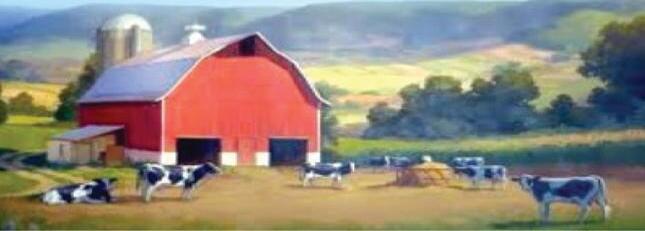
The plant, one of Colorado Agri-Products’ three in the state, employs about 30 employees directly,plus morethan 100 indirectly through its trucking needs. While the plant has undergone changes since it opened to increase efficiency and produce better yields, Kramer said it just requires basic maintenance to keep it running. Consisting mainly of pipes, pumps and motors, he said the plant is basically a“giant still.” The ethanol they produce in the 72-hour fermentation process is 200 proof raw grain alcohol moonshine. But because it is illegal to transport, they add natural gas so people can’t drink it beforeshipping.
They make about 52 million gallons each year,approximately athirdofthe 150 million gallons used in Colorado annually.
While thereare no longer any federal subsidies for the ethanol industry, Kramer noted that the renewable fuel standardrequires the oil industry—“our biggest competitors” —toadd the product to gasoline. About 95 percent of their product goes into regular gasoline, which contains up to 10 percent ethanol. The other 5 percent goes into E-85.
Although he says it can be achallenge working with oil companies, even without the federal requirements, blending the ethanol with gasoline makes economic sense. Kramer said the oil compa-
nies make about $1 per gallon offthe ethanol they purchase to add to the gas.
Among its other benefits, Kramer adds that ethanol helps reduce dependence on foreign oil. “No wars were ever fought over acorn field,” he said.
Kramer,who has abackground working in the seed industry, said he expects the industrywill continue to grow,thanks in partto advances in seed technology that is making more drought-tolerant corn. That will benefit area dryland farmers, and will mean more cornfor his plant to process.
Contact Journal-Advocate managing editor Sara Waite at 970-526-9310 or swaite@ journal-advocate.com
The Sterling distillers grain stays local —sold to feeders within a40to50mile radius
ETHANOL from page 22
www.logancountyco.gov
SALUTE TO AGRICULTURE •FEBRUARY 28, 2014 •23
From North to South and East to West, Agriculture is the Heartbeat of Logan County! We Salute the Agricultural Community and thank those who work so hard to enrich our Rural way of life.
By Judy Debus Special to Journal-Advocate

The South Platte River
raged for morethan aweek
last fall, filling up rows of sugar beets with water as the Hettinger family of Meri-
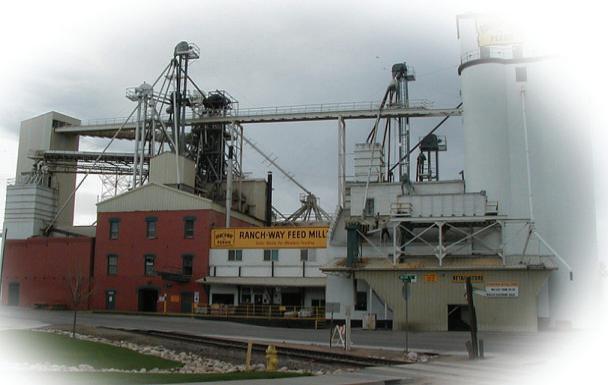
no worked hardtokeep them drained during the flood. The water didn’t get to
the farmstead with the house and buildings, but came into the fields, causing





havoc there.
“Last year’s beet harvest was the hardest ever,” said HowardHettinger,who farms with his wife Julie and See HETTINGER, pg.25

change but goal doesn’t Hettingers enjoy providing food on family farm
Techniques
Judy Debus /Courtesy photo
It’s All About AgrIculture! 546 Willow st. Fort collins, co (800) 333-7929 (970) 482-1662 S&S Auto Repair We have been herefor 33 years and we arestill heretomeet all of you automotiveneeds. 115 Broadway St. Sterling, CO 80751 (970) 526-2668 24 • SALUTE TO AGRICULTURE •FEBRUARY 28, 2014
Howard Hettinger looks over the herd of cows that have been brought into afarmyard pen to await the calving season expected to startwithin the week.
son, Mike. “Wespent alot of time just cleaning the mud offthe equipment to be able to get the beets out.”

The major partofthe Hettingers’ family farmconsists of irrigated acreage with some dryland they rent out. Sugar beets, cornand alfalfa arethe primarycrops along with acow/calf operation on the farmthat has been in the family since 1952 and lies about three-quarters of a mile from the river.


Howard’s parents, George and Helen, originally came to the farmin1952 and Howardgrewupthere. He attended and graduated from Merino Schools, continuing on to Colorado State University to obtain an ag business degree and amaster’s degree in business and economics.
He then joined the Air Force and National Guard,
serving as anavigator and then pilot, for atotal of 12 years. He and Julie werestationed in Sacramento, Calif., for his navigator training, and Enid, Okla., for his pilot’s training. He was also employed by Federal Land Bank beforemaking the decision to returntothe farmin1974, when his parents wereready to retire.
“Weknew we didn’t want to live in the city after being on those freeways twice a day,” he said. “My parents encouraged us to come back to the farm; Iknew that was what Ireally wanted to do and it worked out well for both families.”
The past 40 years have gone the gamut of change in farming procedures and equipment, with most of them being for the best according to Howard. Farming has been astruggle with See HETTINGER, pg.26
HETTINGER
from page 24
Judy Debus /Courtesy photo
Wiggins Electric, INC. 105 Karen St. Wiggins, Colorado 970-483-7876 SALUTE TO AGRICULTURE •FEBRUARY 28, 2014 •25
Geeserest from their long winter flight in the shadow of an irrigation sprinkler that is at rest for the winter on the Hettinger farm. Sprinklershavemade ahuge difference in the amount of physical labor on family farms in today’sfarming process.
HETTINGER from page 25
lots of hardwork and long hours until the last few years, in his opinion, but he grew up with it and knew what to expect.
“It would be hardtocount the number of hours over the years of getting up in the middle of the night to check and change water,” Julie said. “Weworked veryhard and Ieven remember sleeping at the end of the field
when Iwas carrying one of the children, to be surewe knew when the water got theresowecould change it.”

That job is much easier now with the addition of sprinklers to their farm.
Julie has always been a partofthe operation, sharing in the physical work as well as keeping books and other clerical records. She is currently sporting acast and
using awalker after breaking her leg in afall while feeding cattle from the back of apickup last year
Partner son Mike, who also attended CSU, was away at arequired update of schooling for his pilot’s license on the day of this interview.Heismarried to a school teacher,Tara, and has two children; and daughter,
Kristina is married to Chris, aveterinarian, and they also have two children.
The new changes in farming have allowed the farmers to cover moreground more efficiently with less equipment, according to Howard. It does leave trash in the field and thereisnot as much blowing dirttoday
He talked about the combine that records yields and
moistureasthey harvest the field.
Comparison and analyzing shows it to be within 1-2 percent of the testing done at selling time.
The combine and the GPS system guides the planting in today’s farming world —a world that is much different than when he began in the industry.
See HETTINGER, pg.27
Judy Debus /Courtesy photo
26 • SALUTE TO AGRICULTURE •FEBRUARY 28, 2014
TheSouth Platte River has calmed down from its rage that hit northeast Colorado last year and the water that is not frozen meandersondown stream through the Hettinger farm.
“The new innovations use one-fourth of the fuel per acrethan before,” he said.
Even the cattle partofthe work has become less taxing with the ability to exert some control over the calving season and grain bin storage facilities.
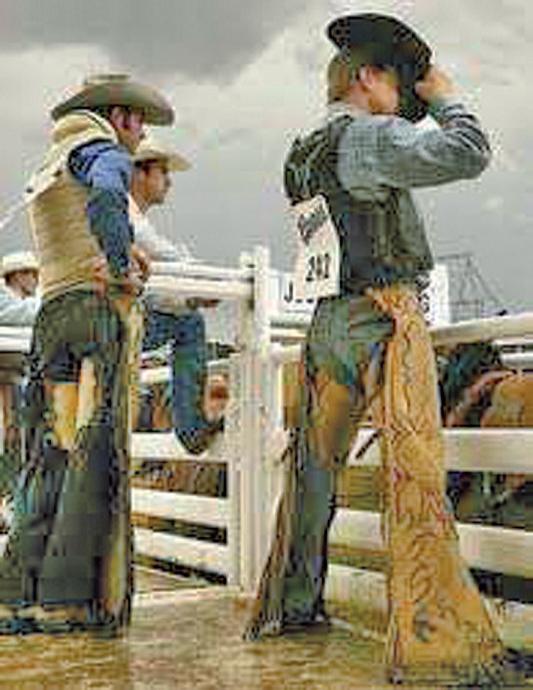
Crop prices have been up and down over the years and Howardnoted that overall, their biggest cost to the operation is insurance, including all the different types they have to carry

Howardhas served over the years in various organizations, including the Corn Growers Association and FarmBureau, while Julie has also volunteered for the Logan County Fair Board and the Northeast Colorado Cancer Resource Association.

Atrip to go elk hunting each year has been his hobby and he has the trophies
on the wall to show for his efforts in past years, as well as jerky,sausage and other meat cuts in his freezer.
Although he hasn’t had a chance to fully study the new 2014 FarmBill recently passed, Howardagrees thereare some good changes in it.
Both Howardand Julie agree that the farmwas a great place to raise afamily and they have enjoyed their countryliving as well as the work that has gone along with it.

“This past beet harvest, with all the mud, low prices and other hassle, may have been the first time that the wordretirement has gone through my mind,” Howard said with alaugh.
“But our most important job is to provide food,” he said. “Weare doing something important and we like what we aredoing.”
HETTINGER
from page 26
Judy Debus /Courtesy photo
Colorado’sSourceforAgricultureInformation! Featuring Territorial Rodeo Updates, Horseman’s Corner,Market Updates, Agri-Shop, Agri- Talk along with complete ag and local weather,news and sports! Live coverage of the Rockies, Nuggets, Avalanche and Broncos! Turn it on! FIVEgenerationsof the hottest countrymusic along with local news and weather updates! NASCAR coverage each weekend. NortheastColoradoBroadcasting 970-867-7271•www.ksir.com SALUTE TO AGRICULTURE •FEBRUARY 28, 2014 •27
Howard Hettinger prepares to check the cattle that are not yet in the yard pens before going to the house on asnowy winter day.
Marijuana
By Jenni Grubbs Times Staff Writer
Colorado is at the forefront of a big agricultural, economicand cultural experiment: legalizing marijuana.
Legalized medical marijuana is not really news at this point, but the legalization of growing, processing and selling the plant for morethan just medical purposes certainly still is abig, evolving story.
The latest experiment is well underway, and some of the growers who started producing the plants for medical purposes and selling it and related products in dispensaries as “caregivers” for “patients” now have been allowed to establish recreational retail stores for similar products to sell to anyone
older than 21 —inlimited quantities.
These stores arepartofthe latest phase of the experiment, and thereisstill much to be determined from legal standpoints, including financial handling.
Paradigm shift
Whileagricultureistypically seen as a rural thing, legalized marijuana growing is thriving in some, but not all, urban areas of Colorado, all while most rural areas appear to be resisting the crop’s incursion for a wide range of reasons.
For Cheri and Robin Hackett at BotanaCareMedical Cannabis Center in Northglenn, adding arecreational storeand separate grow facility to their existing medical dispensaryand expanding their indoor farm when it became legal was ano-brainer.
See CANNABIS, pg.30
Opportunities, roadblocks for cannabis as Colo. agricultural crop
Small Washington County grower faces different challenges from large grower

28 • SALUTE TO AGRICULTURE •FEBRUARY 28, 2014
Jenni Grubbs /Fort Morgan Times Cannabis plants beinggrown for both medical and recreational marijuana crops take120 days to reach harvesting readiness. Here, BotanaCare Medical Cannabis Center co-owner Cheri Hackett stands Feb. 15 with some of the plants that are almost ready for harvest at agrowing area at the back of her Northglenn combined medical pot dispensaryand retail recreational marijuana store.
At First FarmBank, nothing about your business is small.
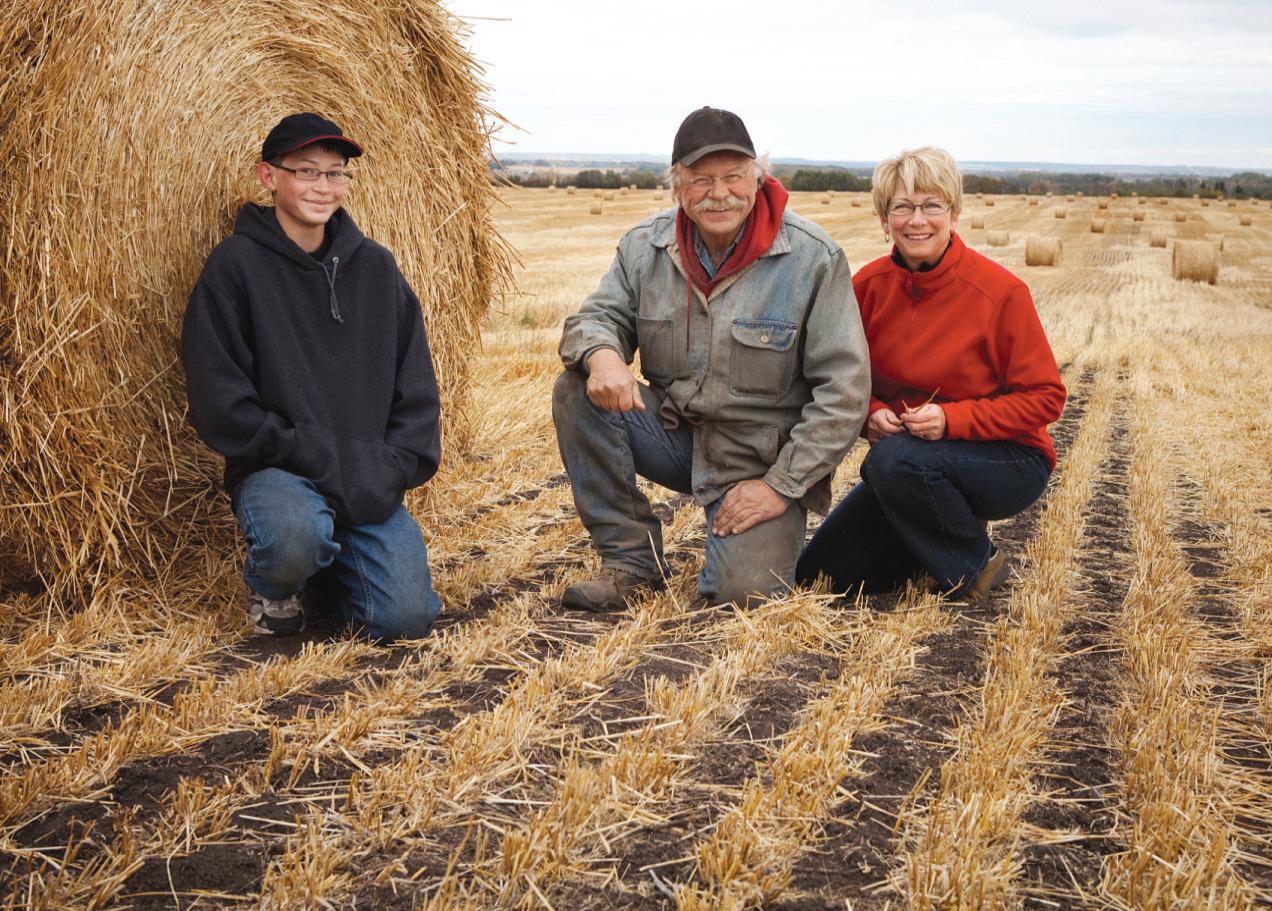
You and your family don’t work nine to five. And you don’t work five days aweek. It’s a24/7 operation. That’s why you need abank that takes your business as seriously as you do.
We work hard to provide our customers with superior service, great rates and the best personal, business and agriculture banking services every day. Give us acall or come by and see what First FarmBank can do to help your business thrive.
Hometown values.
Hometown strong.
www.firstfarmbank.com
931 West Main Street
Sterling, CO 80751 970-522-2444
Member FDIC
SALUTE TO AGRICULTURE •FEBRUARY 28, 2014 •29
The Adams County and Northglenn municipal governments, as well as the state, granted the sisters, already existing medical dispensarylicense holders for BotanaCare, the separate recreational retail licenses that allowed them to set up and operate aretail storefor recreational goods available to adults over 21 years old in limited quantities, as per Colorado’s Amendment 64.
For caregiver and small-scale grower James Clark in rural Washington County,ithas not been such asimple process.
Not long after Colorado legalized medical marijuana and started setting up rules and regulations for caregivers and dispensaries, Clark sought to set up amedical marijuana dispensarytoserve morethan 400 red-card-holding patients in northeast Colorado who sought him out as apossible caregiver.
But after the Washington County BoardofCommissioners issued aban on such facilities about four years ago, Clark was only able to provide carefor afraction of those people and was limited in being able to develop products, such as edibles, that would not mean patients having to smoke the


plant for their treatment.
He currently grows and provides medical marijuana to around 40 people. Clark said he owns the water rights for what he needs for irrigating the plants.
Small-scalegrowing
Clark’scannabis grow processes arenot that much different from those of alarger facility,like BotanaCare.
He uses grow lights and organic fertilizers, cloning baby plants, vegging them and then moving them to stronger lights to maturebeforeharvest. He keeps the male and female plants segregated and raises the strains of cannabis that his patients want.
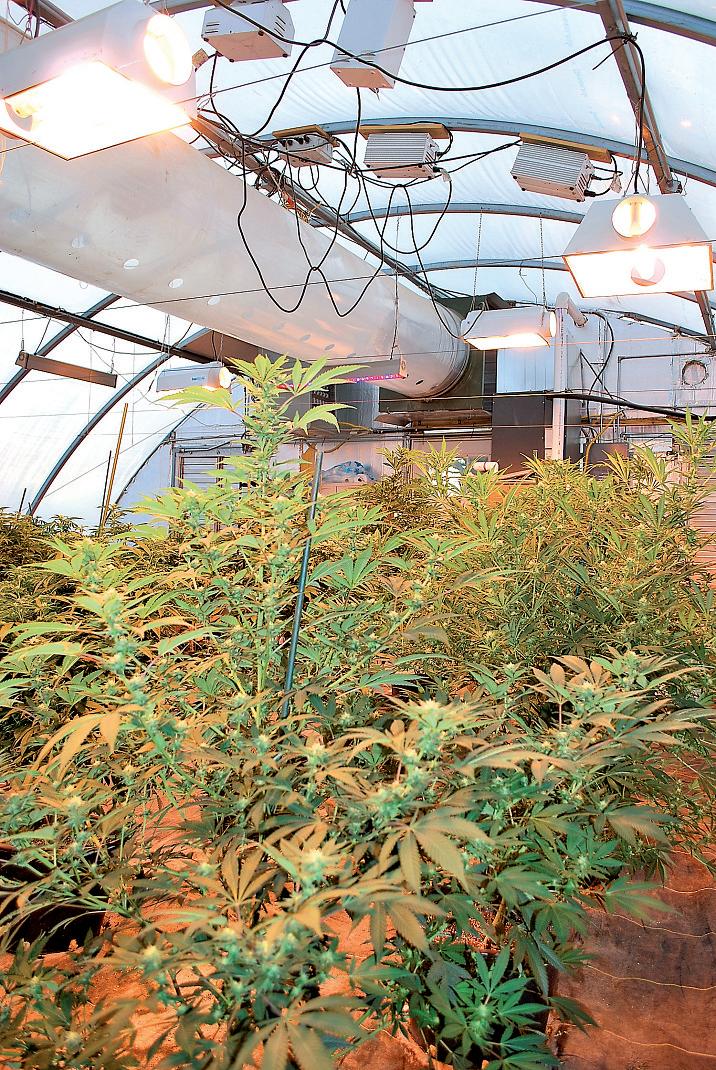
But with the size of his operation, he does this with afew volunteers in one small greenhouse, not abig warehouse with lots of employees and room after room after room for the various stages of growing the plants.
However,just like with any crop, everyfarmer has his or her own preferredmethods and secrets.






And even with all the state oversight and monitoring, there still aresome proprietary aspects of the legalized cannaSee CANNABIS, pg.31
Flowering marijuana plants grow in asmall greenhouse in rural Washington County southwest of Akron. James Clarkserves as caregiver for medical marijuana patients and grows alimited number of plants for them.
CANNABIS from page 28
23101 Hwy. 52 Fort Morgan, CO 80701 970-768-0553 /970-867-8414 AERIAL SPRAYING, CHEMICAL APPLICATIONS &BANNER TOWING Scott Aviation Inc. WesternSugarCooperative GrowerOwned Besureit’ssugar:TheNaturalSweetener-15Caloriesperteaspoon! 18317Hwy.144,FortMorgan,CO80701 Proudly Supporting Our Local Agriculture ® 30 • SALUTE TO AGRICULTURE •FEBRUARY 28, 2014
JenniGrubbs /Fort Morgan Times
bis growing industry.

As acaregiver,the strains of plants he grows aredirectly related to the needs of his patients, Clark said.
“I grow aspecial strain of White Widow that offers pain relief for women with fibromyalgia,” he said, adding that he wanted to develop edibles with that strain “with the specific right amounts of THC or no THC” to meet the individual patient’s needs.
“I think there’s going to be abig push for hemp in the medical community because it does not have THC,” he said.

Still, Clark said he welcomes anyone from law enforcement or the state to his facility.Hewants to make surehe’s staying within the rules, too, since therestill arefederal laws that say the whole thing is illegal.
He wants to be able to continue to provide the medicine that his patients, many of them elderly,need for treating cancer-medicine-induced nausea, pain from a host of debilitating diseases and the various other ailments allowed under Amendment 20.
Clark also is looking at possibly expanding to opening adispensaryand/or retail storeand grow operation in Log Lane Village, but that is still aways offfrom becoming areality.Still, he






has already started working with iComply,aprivate company based in Colorado Springs that helps make surethose in the marijuana industryare complying with all state rules and regulations and not venturing into trouble with the federal government.
“For me, this started out and was always about caregiving,” he said. “We’ve already had the people as patients,” so why not continue to serve them in that larg-
er capacity,hethought, going back to what he sought to do in the first place. “The whole money thing is great, but for us it’s really been about caregiving. For the 10 years, if we had been about the money,we’d have the money now.”
Family businesses


Caregiving is alarge part of the Hackett sisters’ mission, too, but the expansion into the recreational side is quickly proving to be
extremely lucrative.
BotanaCareistheir family business, but it is just one of the businesses they have been in together
Previously,they werein the iron and steel industry and wereinvolved in the construction using those materials at the original Mile High Stadium, Coors Field, the Colorado Convention Center and Denver International Airport, among other projects, Cheri said.
She said that her family
had been Colorado pioneers who “got herefor the gold rush, and now the bud rush.”
But when construction on large projects slowed down early in the new century, they found anew growth industry: medical marijuana.

This was something near and dear to Robin’s heart.
She has some medical ailments that cause her debilitating pain, and the prescription medicines doctors gave her to treat it left her with kidney and liver problems and still lots of pain, she said.
Medical marijuana was her way to kick the nonsteroidal anti-inflammatorydrugs, or nsaids, and the opiates and just function, Robin said.
Large-scalegrowing Thesisters have built a thriving business out of their dispensaryand agricultural cannabis operation, now expanding into growing for the recreational storeand trying to keep up with demand while still staying within growing limits set by the state.
Their growing facility is at the back of their Northglenn warehouse right on the west side of Interstate 25. The warehouse has high ceilings that make venting the heat the grow lights produce easier,and the warehouse has See CANNABIS, pg.32
CANNABIS from page 30
Jenni Grubbs /Fort Morgan Times
DANFORD REALTY LLC www.danfordrealty.com 300 E. PLATTE AVE., SUITE 100 FORT MORGAN, CO 80701 email: danfordrealty@twol.com Business: 970-867-5644 Fax: 970-867-5645 FARM •RANCH •RESIDENTIAL •COMMERCIAL “We help people buy, sell or trade Real Estate.” FLORENCE HALLEy Broker AssociAte cell: 970-768-3212 TWYLA TIFFANY Broker AssociAte cell: 970-768-9527 JERRAL L. DANFORD Broker-G.r.i.-M.r.e. 20169 US Highway 34 Fort Morgan, CO 80701 970-867-5688 www.mcrea.org Be apartof apowerful future! We salute all Farmers and Ranchers for their hardworkand dedication. THANK YOU!! SALUTE TO AGRICULTURE •FEBRUARY 28, 2014 •31
As soon as they become viable, babycloned marijuana plants being grown at BotanaCare Medical Cannabis Center in Northglenn are repotted and tagged as either for medical or recreational purposes. Theythen startthe "vegging" process so theycan grow and mature, according to BotanaCare co-owner Cheri Hackett.
CANNABIS from page 31
room for them to expand three-fold, if the state allows it, Cheri said.
They employ workers on the growing side who they call “bud tenders,” as well as people to process, package, roll, sort, sell, do patient intake, maintain patient files, deal with all the state and local reports and handle everything else that goes with running multiple businesses that have to be separate but arestill heavily entwined.
Growing the plants
indoors with lighting systems is important for producing marijuana crops, Cheri said.

“One male plant will fertilize 10,000 to 50,000 female plants,” she said.
That would be OK if they weregrowing hemp, rather than marijuana, which is ruined as acropifitgets fertilized by the male plants.
“It turns to stems and seeds,” she said. “That’s why we grow indoors. We can control it. Outside grows grow 10 times better,but we
can’t control it.”
She said that outdoor growers in the mountains have less problems with this due to agreater number of other trees and plants that keep the pollination from the male cannabis plants moreat bay.
The BotanaCaregrow operation uses the fertilizing chemicals that the state says areallowed, Cheri said.
“All of our chemicals that we use on the plant get flushed out through the roots,” she said. “Weput that
outside on the dirt, and it’s like fertilizing our lawn. There’s harsher chemicals used in lawn fertilizer than what we put on this plant. None of it really goes down the drain.”
The regulation of the chemicals that can be used as fertilizer on the plant is due to its intention as amedical product, she said.
The current grow operation at BotanaCareuses
“probably acouple hundred gallons of water aday” on the medical side, and about
the same or alittle moreon the recreational side, Cheri said.
“I’m planting morerecreational,” she said. “I’m expanding to keep up with recreational demand.
Growingcycle
Every120 days, they have anew crop, and each plant is monitored on multiple levels “from seed to sale,” Cheri said. “Everything is tagged,” with blue tags identifying a plant as for recreational pur-
CANNABIS, pg.33
See
Jenni Grubbs /Fort Morgan Times
32 • SALUTE TO AGRICULTURE •FEBRUARY 28, 2014
BotanaCare MedicalCannabis Center's "bud tenders" use this white board to keep track of where the plants are in the growth cycle and what types of care and treatments theyneed from hour to hour,day to day, week to week, etc., according to co-owner Cheri Hackett, shown here Feb. 15.
poses and yellow ones signaling amedical plant.
“Everytwo weeks we harvest,” she said. “We’retrying to get it to once aweek harvest.”
The plants startout as root clippings and arecloned into baby plants. From there, they go under increasing levels of light while “vegging” and growing, Cheri explained.
“Slowly,wemoved them into ahigher level of light so not to burnthe plant,” she said.

Such grow operations typically arepotted not in dirt, but in coconut husk materials or hydro, using water and lava rocks, Cheri said, but some people do use dirt.
“Everyone has different opinions on how to grow it best,” she said.
BotanaCarehas aseparate room for flowering plants with far stronger lights. The smell from the plants is stronger in there, too.
One of the later processes is flushing the plants with purewater,with the city water’s chlorine filtered out, to “flush all the nutrients out of the plants,” she said.
Currently,much of the plant winds up wasted, with only the parts of it that produce the drug being used for the smokable product or for making edibles, creams and other products, both medical and recreational.
Limitedgrowth
Whilebusiness may be booming, Cheri knows that thereare limits in how far her business can expand.
“My licenses allow me to grow 3,600 recreational and 1,800 medical plants,” Cheri explained, with the recreational the double of the medical, which is directly related to the number of patients —360 —the BotanaCaredispensaryis allowed to serve.
runout of product.

“The fact that people voted and they want it, they’re coming out to prove it,” Cheri said.
While business has naturally slowed from the booming first week, it is still steady,she said.
She said another thing that limits potential growth is the lack of open markets between the growing number of states that allow medical marijuana and now the
just the growers. Iunderstand why the banking doesn’t want it. We could change our whole economy just by changing it to not a schedule 1drug.”
While the Obama administration announced some guidelines for banks that would do business with marijuana establishments in states that legalized it, banks still aresubject to federal laws that make even those relaxed guidelines still full of
though, she said, is when the state will allow “decoupling,” which means that licensed facilities could sell plants wholesale to each other.That is supposed to go into effect in July,she said.
“That’s going to make it great for those farmers,” she said.
Financials
Retail marijuanadefinitely has the prospect of being lucrative for the state.
Colorado Gov.John Hickenlooper recently announced budget projections with larger-than-expected sales tax revenue leading to bigger spending on the youth prevention, substance abuse treatment and other related programs.

Cheri said she experiences that larger level of sales tax revenue being collected everyday
She said she would like to expand up in the level of licenses she has from the state so she could grow moretomeet demand.
“I’m still looking to grow us because we’reseeing high volumes of recreational clients,” Cheri said. “We could do moreifwecould sell more.”
Like most retail stores, the BotanaCarerecreational facility limits customers to buying aquarter ounce at a time “to keep up and control volume” so that they do not
two states with legalized recreational marijuana.
The conflicts between state and federal laws play into this, as moving the product from state to state takes it even further into federal territory, wherethe plants remain illegal.
“One thing that needs changed is cannabis needs to be taken offthe schedule 1druglist,” Cheri said. “If they move that to aschedule 4o5,itchanges everything, including banking. This affects all the traders, not
onerous paperwork and far too many ways to runafoul and wind up with seized assets and potential prosecution for participation in drug trafficking, money laundering or racketeering just for processing financial transactions or offering bank accounts to marijuana businesses.
Also at question is the hemp market, which is just in its beginning stage after decades of being banned as acrop.
Something that could help,
“We’recomparable to one of the big box stores,” she said.
BotanaCareisone of three dispensary/storecombos in Adams County.
Log Lane Village soon could have similar facilities, as that little town’s boardof trustees recently voted to allow licensing of up to three medical marijuana dispensaries and three recreational retail pot stores. The town ordinance also allows for related grow operations and See CANNABIS, pg.34
CANNABIS from page 32
“For me, this started out and was always about caregiving. The whole money thing is great, but for us it’s really been about caregiving. For the 10 years, if we had been about the money,we’d have the money now.”
842-2622 •1302 W. EDISON www.brushkart.com OPEN 7DAYS AWEEK! 7AM TO 9PM 17199 Rd. 21 •Fort Morgan •867-7811 SALUTE TO AGRICULTURE •FEBRUARY 28, 2014 •33
James Clark caregiver and small-scale grower in Washington County
facilities to produce related products, like edibles.
Clark would like to become one of those license holders in Log Lane, but he is waiting to see what happens.

But he said he faces issues with finding available property in the town, as well as other challenges.
“We’regoing to stay on the sidelines, but we’ve got our letter of intent to file for an application in,” he said. “We’regoing to have to pray to Jesus and hope to be able to do this. It’s our life savings on the line.”
Multi-facetedplant
CheriHackett and James Clark both arepassionate about cannabis plants and their qualities.

“Because of it being the type of plant it is, it rejuvenates the land,” Cheri said.
And she sees lots of potential uses for this in agriculturewith growing hemp becoming legal, as well as with marijuana legalization.
“Farmers can do cornand hemp and rotate it through,”
she said. “You don’t have to leave the land fallow.This crop revitalizes the land and puts nutrients back in it. The properties of hemp arephenomenal.”
She said she also has learned “a lot about the plant’s overall health properties” along with all of the related farming knowledge she has gained.
Clark and Cheri Hackett both want to see lots more research be done into the plant.
Cheri said she is working with the University of Denver on seeking aresearch grant.
And both BotanaCareand Clark do product development for their medical patients.
And Clark said he wants to see morehemp being produced in Colorado, as it is a dryland crop that would not need the water that corn does.
Contact Jenni Grubbs at jgrubbs@fmtimes.com, follow @JenniGrubbs on Twitter or check out tout.com/ jennigrubbs
These cannabis plants are in the final stage of "vegging" before the "bud tenders" transfer them to larger pots and another room at BotanaCare Medical Cannabis Center in Northglenn with higher-powered grow lights to help them continue maturing,according to co-owner Cheri Hackett. Everyinch of the grow facility is covered by surveillance cameras, and their feeds can be accessed remotely by state marijuana enforcement officials, she said.
JenniGrubbs /Fort Morgan Times
Bijou Irrigation System
229 Prospect Street
P.O. Box 972
Fort Morgan, CO 80701
970-867-2222
office@bijouirrigation.com
Acomplex, innovative agricultural irrigation water delivery System located in Weld and Morgan Counties.
Come by to see us and learnabout the agricultural irrigation water delivery industry from abusiness that has been in existence for over 100 years.

CANNABIS from page 33
FAWESUPPORTALL RmingACTiViTiES •Seed •Fertilizer •ChemiCalS •appliCation 22282 HWY 34 Fort Morgan, CO www.cpsagu.com 970-542-2993 34 • SALUTE TO AGRICULTURE •FEBRUARY 28, 2014
LIFE B. ETTE AR
Physical, occupationaland speech rehabilitation



You’ve made alife by the strength of your character and the sweat of your brow.With that kind of determination, we can help you makeafast recovery, too. Our advanced therapy programs are designed to restore your health following surgery, an illness or injury. Complete short-term and outpatient rehabilitation services are available for you at Valley View Villa.


Thank YouAgricultureProducers … For All That YouDoToEnsureaWonderful Quality of Life for Us! 970.867.8261 •815 Fremont Ave. Joint Commission accredited LCCA.COM lThat You D
SALUTE TO AGRICULTURE •FEBRUARY 28, 2014 •35
Profit in soil health principles
Producers see yield increases


 By Dan Barker
Times News Editor
By Dan Barker
Times News Editor
Creating good soil health makes good businesssense.

That was emphasized by Aaron Waller,Natural Resources Conservation Service agricultural economist, during the Farming Evolution workshop in Holyoke recently.
The replacement cost for soil function comes to about $28 per ton of soil, he said.
That means that this is what it costs growers when soil is not healthy
While partofthat is in benefits to the world at large, $7.66 per ton is strictly in terms of nutrients and





yields lost to the grower
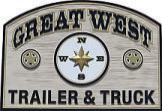
In addition, about four to five tons of soil per acreis lost to wind and water erosion everyyear on tilled fields. Since that is often the most valuable soil, it comes to aloss of about $25 an acre to the producer,Waller noted.
At costs like that, it pays to make suresoil health is maintained by making sure soil is covered, doing less tillage and growing plants throughout the year,hesaid.

In fact, increasing the organic matter in soil from 1.5 percent to 2.5 percent gives a12percent increase in yield, which is agood reason to think about keeping
crop residue in the field or planting cover crops, Waller said.
Cover crops that hold soil in place and put nutrients into the soil areflexible, since anumber of different cover crops areavailable, and growers get areal returnonthat investment, he said, especially if they also runlivestock on the land when acropisnot in it. Many growers resist this kind of information, because it is not the way they have been accustomed to farming. They can worry about the cost.
However,economics is not the real barrier to adopting these practices. In anationwide survey of 718 producers, almost all werewilling to pay about $40 an acrefor
seed and planting for the 10 percent increase in yield they would receive from cover crops, Waller explained.
They said they had a9.6 percent increase in their yields using soil health principles, he said.
With a12percent increase

of aproject in which Austrian winter peas wereplanted in southeast Wyoming to benefit wheat fields.
About 70 pounds of these peas wereplanted per acre into wheat stubble in September.These helped replace nutrients in the soil,
Reason for planing cover crops: Increasing soil organic matter from 1.5 percent to 2.5 percent gives a12percent increase in yeild.
in yield, acorncropyield could go from 180 bushels per acreto202 bushel per acre, Waller said. If cornis selling at $4.25 per bushel, that is an additional $93.50 an acretothe grower.
Waller told the producers
provided soil cover during a high wind period and displaced weeds. Since it was tilled into the ground before May,the crop did not affect soil moisturemuch, he said. Consequently,the cost of planting the peas and using See SOIL HEALTH, pg.64
Agricultural economics
Country Hardware •Tools •Valspar Paint •Electrical •Plumbing •Farm Supply •Housewares •Seasonal Items •Forney Welding Supplies •Windows &Screen Repair •Lawn&Garden •Chain SawSharpening •Greeting Cards •Keys made •Hunting &Finishing License Rental Center™ Open 7:30-5:30 pm M-F •Sat 7:30-5:00 pm 218 Main St. wiggins 483-7312 Call For information we SHip u.p.S. ALLAcrossAmericA GreatWest trailer&truck 9099 NorthFrontage Road, Fort Morgan, Colorado 80701 970-867-3544 |Fax: 970-867-3546 www.greatwesttrailers.com Fresh Load Of Dump Beds Just Received! All Sizes Of Big Tex Flatbeds Available. *Wewill meet or beatANY advertised priceon BigTex Trailers or CM Truck Beds. Biggest CM Truck Bed Sealer In The West! 100+ Beds In Stock At All Times. 36 • SALUTE TO AGRICULTURE •FEBRUARY 28, 2014
Water runs off of strips of land that are basically bare dirt, similar to what growersuse, which is visible in the jarsthat caught alot of water in the rainfall simulator demonstration held at the Farming Evolution workshop recently in Holyoke.
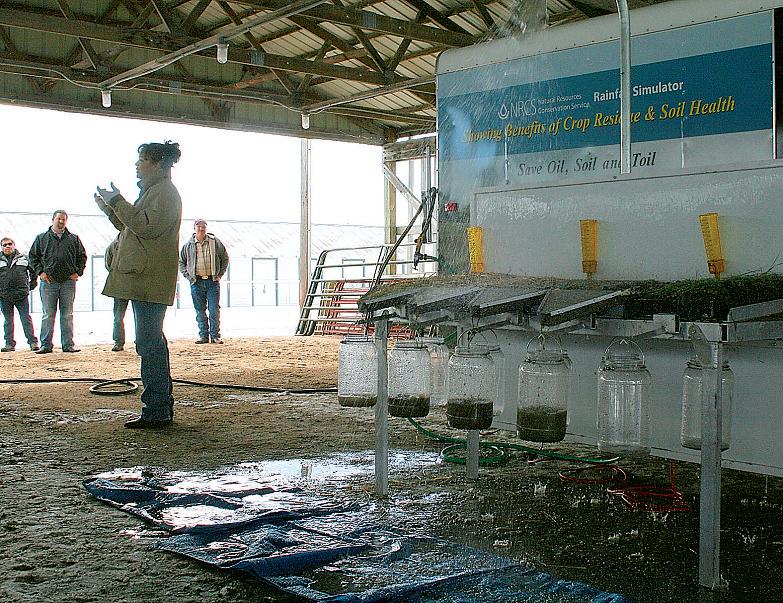
Tilling hurts soil productivity
Growers must cover soil

 By Dan Barker Times News Editor
By Dan Barker Times News Editor
Rain poured offthe bare ground into ajar,with little of it penetrating the crust of the dirt.
That was one of the things agricultural producers witnessed during the Farming Evolution workshop at the Phillips County Event Center in Holyoke in mid-February.

Watching the water pour offastrip of baredirtthat was taken from alocal field —but not offastrip of pro-






tected field —was educational, because the growers werelearning about how tilling soil can hurttheir production capacity.

About 160 producers showed up for the workshop, and learned that conventionally tilled dirtisnot the best soil to put seed into.
The “rain” they watched came out of asprinkler that was aimed at various kinds of soils: astrip of conventionally-tilled dirt, strips of similar dirtthat wereeither covered somewhat or covered completely with straw,astrip of untilled ground and astrip of soil with anatural grass cover.
See NO TILL, pg.38

Soil health
Dan Barker /Fort Morgan Times
•Best Stop between Denver &Nebraska •Easy Access •7 Days AWeek 5:00 a.m. -11:00 p.m. Follow us on 16740 Hwy 39 Exit 66A of I-76 970-483-7867 Stub’s Gas &Oil TheTruck Stops Here... COATES REALTY, LLC. 114 EPlatte Ave. •970-867-6770 We are proud to be a member of the Fort Morgan Chamber of Commerce Experience.. Knowledge.. Results Jeni, Lindsay, Deb,Lorraine SALUTE TO AGRICULTURE •FEBRUARY 28, 2014 •37
That was partofarainfall demonstration put on by Kathy Buttle, atraining specialist, and Dallas Johnson, district conservationist, of Scottsbluff, Neb.
Beforethe demonstration, StormCasper,amember of a Natural Resources Conservation Service soil health team, showed growers slides of how alocal 2-inch rain destroyed afield and led to a huge amount of water and soil runoff, because it was essentially nothing but bare dirt, not really soil.
During that same rain, almost no soil moved on the natural areas nearby,henoted.
The same kind of runoff happened in over-grazed conservation land, Casper showed the crowd in another slide.
Rain does not have to run offlike that, he explained.
When the first settlers came to Northeast Colorado, the soil had great conditions and local grasses were“belly high,” said Joel Moffet, another member of the soil health team.
“That’s why they stopped here,” he said.
This area was considered among the most productive land in the United States beforethe Dust Bowl of the 1930s, even though it had the same amount of rainfall as it does today,Moffet said. Growers cannot just blame growing conditions on how drythe climate is, since it has always been that way.
Since pioneers first moved to the area, producers have burned up all the carbon in the soil, and that is because of the way they have tilled the soil, Moffet said.
When afield is tilled, the soil is turned over,and the microscopic bacteria and fungi that open up the soil to water and build up carbon arelost, he said.
“Everytime we till we
destroy carbon,” Moffet said.
Growers need to find ways to get carbon back into the dirtifthey want to capture all of the water they can, he said.
Moffet noted that it is difficult for anyone to listen to new ideas, but that is what producers need to do if they want decent production from fields.
The soil team said that growers need to follow the four principles of soil health: Keep the ground covered at all times; keep living roots in the soil; maximize plant diversity and disturb the soil as little as possible.
It is important to develop a conservation plan that is in harmony with the principles
and how natureworks, he said. It is also vital to write that plan down so the producer will follow it.
Actually,inthis case, the easiest things to do arealso the most profitable, Moffet said.
“Mother Natureisnot a nudist,” he said. That means that whenever dirtbecomes bare, plants soon grow and cover it up, which is why the first principle is to keep ground covered at all times. Keeping living roots in the soil helps to develop a healthy microbe system in the soil. In any acreofrich land, thereisaton of microbes, which is essentially an underground herdthat needs to be protected, Moffet said.
It is common for producers to have to wear boots to go through fields after precipitation or irrigation, he noted, but at an operation that follows the principles, he did not get any mud on his boots right after the field was watered at arate of 1,000 gallons aminute, he said.
In this case, the water is absorbed into the soil, because it is functioning the way naturehas developed it to work, Moffet said. When that happens the outcomes arebetter.
He recommended mimicking the natural plant community in the area.
Moffet noted that disturbing the ground degrades the
natural resources, and that is due to the management practices of growers when they leave virtually no crop residues in fields.
“Tillage paves the way for futurefailures,” Moffet said.
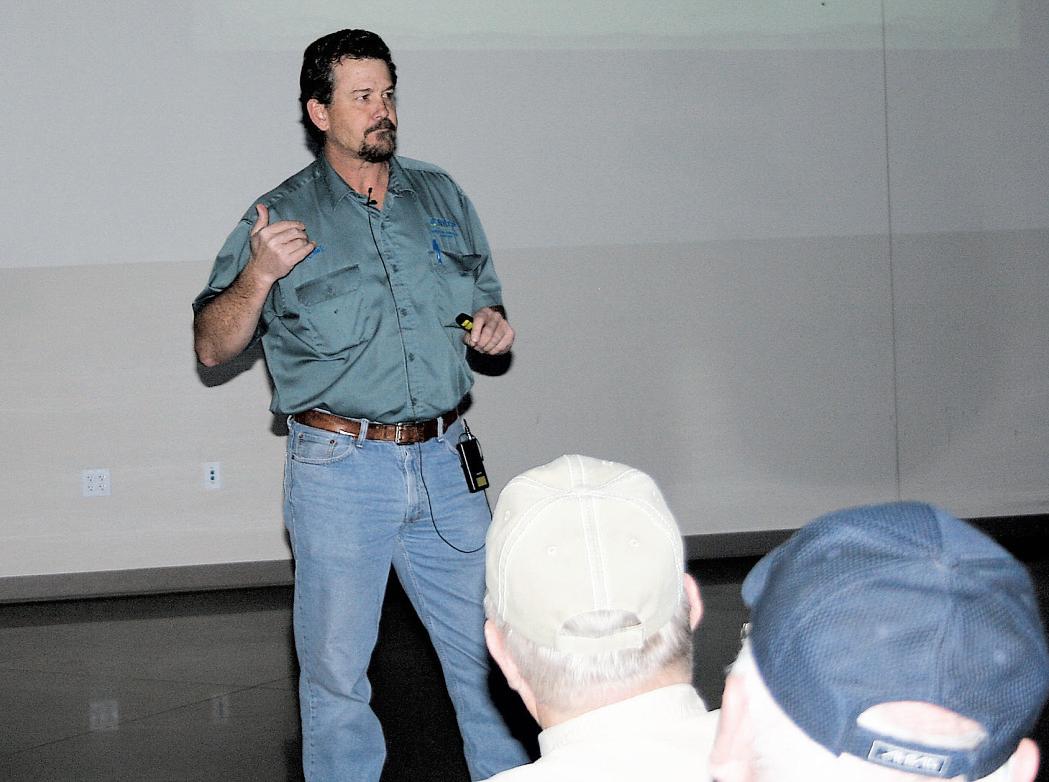
“The earth needs to grow things,” he said. “That’s how the system functions.”
Note that when earth is bare, weeds spring up, Casper said. Weeds act as “scabs” for the soil.
Tilling the ground does not get the dirtready to catch rain, it just lets it wash away,Moffet said.
Growers who want better production capacity must be brave enough to think of things outside of their comfortzones, he said. See
pg.39
NO TILL,
Dan Barker /Fort Morgan Times
NO TILL from page 38 38 • SALUTE TO AGRICULTURE •FEBRUARY 28, 2014
NRCS soil health team member Joel Moffet talked abouthow tilling soil can damage it and cause loss of production during the Farming Evolution workshop in Holyoke.
EasternColorado has low levels of soil health and soil function, Casper noted.
The good news is that it takes money,time and energy to fight Mother Nature, but less of all of that to cooperate with nature, he said.
Covercrops


Covercrops can increase soil fertility,soil health and help with water management, said TimBecker,asoil conservation technician for NRCS.
These cover crops are grown shortoffull maturity and plowed under to improve soil quality
Most producers have heardofsuccess stories with cover crops, but often wonder if it will work in adry area like Northeast Colorado, Becker said.
“It can work here,” he emphasized.
While acover crop does use some soil moisture, when it dies offorisplowed back in, the soil profile is rebuilt, Becker said.
Cover crops break up the compaction of soil, trap nitrogen, work in rotation systems and can be used to feed livestock, he said.
Many cover crops are legumes, i.e., beans and peas.
But growers can determine which crops suit them best and which areaffordable, Becker said. Thereare multiple ways to determine which will work best for a specific area, he said.
Sometimes, cover crops can also act as “companion crops,” in which acommodity crop is planted among the cover crop.
Buttle noted that under the new FarmBill, growers will be required to protect

the soil, at least at alow level. That will mean covering fields in things like straw that will moderate runoff.
Soil microbes turnleftover organic material into pure elements, like nitrogen, which crops can then use for growth, she said.
Microbes also regulate the flow of water,allowing water
to enter the soil quickly, instead of running off, and partofthat is that they open up air pockets in the soil that allows water to penetrate into the soil, Buttle said.

Unless water gets into the soil, it evaporates, and what the producer has available is quite different from what falls, she said.
Soil should be about 50
percent minerals and 50 percent space, but much of the farmdirtiscompacted, which leaves less space for water,Buttle said.
It is not good enough to just stop tilling, she explained.

Growers can change the amount of available water by putting moreorganic matter in the soil with the use of the principles, Buttle said. Soil must be built back to health.
She also noted that simply letting organic matter sit on top of soil does not let the microbes work on them.
“Wehave to starttaking careofour soil,” Buttle said. Those who areinterested in finding out how to improve soil health can contact their local extension office, which can help them find resources.
Contact Times News Editor Dan Barker at 970-867-5651 ext 231 or business@fmtimes.com or follow twitter.com/ DanBarkerFMTime






NO TILL from page 38
Dan Barker /Fort Morgan Times
1-800-280-8873 (TURF) www.GraffsTur Farms.com When it comes to your lawn, we understandyou andyour amily would pre er enjoying time with it, rather thanspending time andmoneycaring orit. Call us about our tur grass varieties thatwill save youmoney, waterand time, while assuring youthe best-looking lawn in your neighborhood. nderstand you and your e enjo Th eB es t Investment For Your HOME Could Be Outside On Your LAWN Th eB es t Investment For Your HOME Could Be Outside On Your LAWN SALUTE TO AGRICULTURE •FEBRUARY 28, 2014 •39
Water runs off of strips of land that are basically bare dirt, similar to what growersuse, which is visible in the jarsthat caught alot of water in the rainfall simulator demonstration held at the Farming Evolution workshop recently in Holyoke.
Family farm serves unique
By Sara Waite Journal-Advocate managing editor
Niccoli Livestock serves a niche market, says Justin Niccoli,head of the familyrunoperation located southwest of Fleming.
That’s because their focus is on producing animals for 4-H youth livestock projects.
It means the small acreage two miles east of Highway 61 is home to several species: cattle, goats, sheep and rabbits —not to mention the family’s friendly dogs that arehappy to greet visitors.
It also means that when it’s time to sell the new crop of “critters,” as mom Linda Niccoli calls them, instead of heading to the local sale barnand handing them off to the highest bidder,they have the buyers come to them to pick out an animal at aset price.
It’s adifferent way of doing things, but one that puts the focus whereJustin thinks it should be: on the youth.
It also gives them an opportunity to give the buyer information that could be helpful as they work with the animal to get ready for showing. The Niccolis provide genetic information, nutritional hints and other tips to improve the chances of win-
Niccoli Livestock focuses on 4-H youth
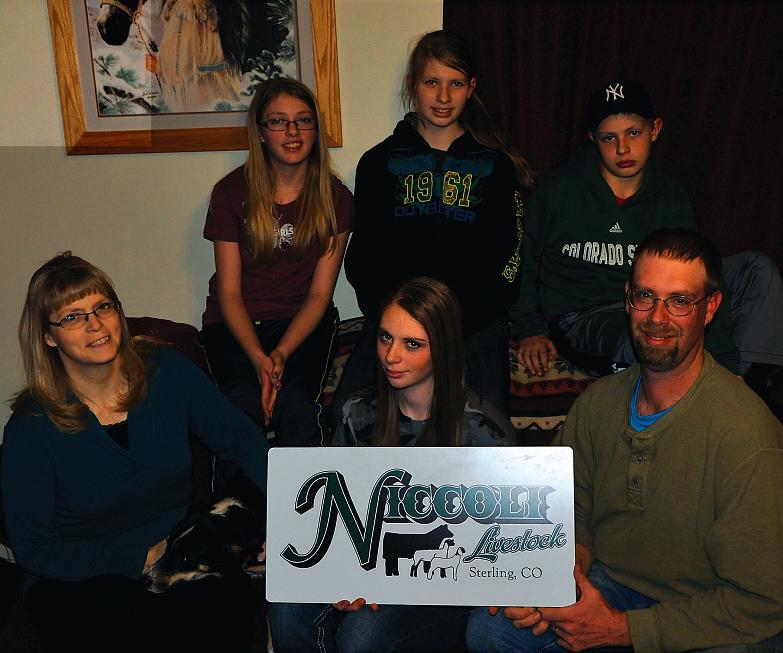
come from ag backgrounds. Linda has also been teaching for 22 years, the last 14 at Fleming High School, where the four children attend. Balancing her teaching career with the demands of the farmcan be challenging, depending on the time of year.But, she said, “Whenever he (Justin) needs me, I’m there.”
So arethe children. Besides Hannah, afreshman at FHS, thereare the twin seventh graders, Sophie and Lacey,and the youngest, Tristan, who is in fifth grade. They all have daily chores to do, in addition to working with the animals they’ll show at fairs and other livestock events. The work, and the schedule, may varydepending on the season, but a10hour day is typical, Justin said.
Hannah has even had to stay home from school a time or two to keep an eye on animals about to give birth. Linda said it amazed people that “she would do something like that, and that we would trust her like that.”
ning aribbon —even if it means they get beat by one of their own animals. “A win is awin,” Justin said.
Goats arethe biggest income generator for the operation, he said. That started when their eldest

daughter,Hannah, was younger.Justin was working for the State Veterinarian’s Office and left her with her grandfather at asale barn. When he got back, he said, he owned 10 goats.
It wasn’t the family’s first
experience with goats, however.They had started with bottle calves, and added a few bottle goats for the younger children, to help teach them some responsibility,Linda said.
Both Linda and Justin
But it’s just one example of the ways the Niccolis feel that farmlife has rubbed off on their children. Linda feels the lifestyle instills confidence and poise that “makes them appear older than they really are.”
See NICCOLI, pg.41
niche
Sara Waite /Sterling Journal-Advocate
SONNENBERG AGENCY, LLC Insurance Crop •Hail•Livestock •Farm&Ranch Sprinkler•Commercial•Home •Auto 302 N. 3rd St.• 970-522-1681 56770 E. Colfax• 303-622-6800 Sterling Strasburg WeSaluteAgricultureandThankYouforYourContributionstoOurCommunity 40 • SALUTE TO AGRICULTURE •FEBRUARY 28, 2014
TheNiccoli family: (front row) Linda, Hannah, Justin, and (back row) Lacey, Sophie and Tristin.
“It teaches the kids so much what they can do,” she said.
“There’s not abetter way to influence young kids,” teaching them life skills, as well as how to compete and get better,Justin said.
It has also helped the children identify their passions and talents. Each child seems to enjoy certain aspects, and animals, more than others, Linda said. Sophie likes to work with all of the critters, and has the most patience. She can work for hours with the most stubbornanimal, Linda said. Lacey enjoys working with rabbits. Tristan, who just started showing last year,is focusing on sheep and goats this year.Hannah, who is quick to admit she’s very competitive, will show atotal of 14 animals (no rabbits for her) at various events,
including acalf she won during the catch-a-calf event at the National WesternStock Show


As she talks, it’s clear Hannah shares her parents’ passion for youth livestock proj-
ects. She said she and her siblings videotape each other working with their animals, and she offers critiques —whether they want them or not. She suggests that 4-H’ers competing in

market divisions could “make the best better” (the 4-H motto) and improve their results by spending moretime getting to know their animals.
She said she tends to
focus moreonshowmanship, because it is more about the participant’s ability to work with an animal, rather than the animal itself, and reflects how well the showman has connected with their animal. Unlike market competition, it’s not something parents can contribute to, she said.
“Mom and Dad will not do any of my work for me,” she said. She compared her family to ateam, with each member playing aspecific role. “Wehave to pull our own weight.”
Working on her own is something Hannah is used to, as she prefers to spend her one-on-one time with her animals in the wee hours of the morning, when she has the practice ring to herself. And her competitive drive pushes her to test the limits in the show ring, she said.
See NICCOLI, pg.42
NICCOLI from page 41
Photos by Callie Jones /Journal-Advocate file photo Hannah Niccoli, right, leadsher calf around the ring during the 2013 Junior Beef Show at the Logan County Fair
SALUTE TO AGRICULTURE •FEBRUARY 28, 2014 •41
Sophie Niccoli poses for a picture with her goat and award for showmanship at the 2013 Logan County Fair.
The showing aspect of their niche business has led to connections across the country, Linda said. Justin will travel soon to alivestock judging gig in California. Hannah has met friends, ranging from kids to college professors, in and out of the show ring.





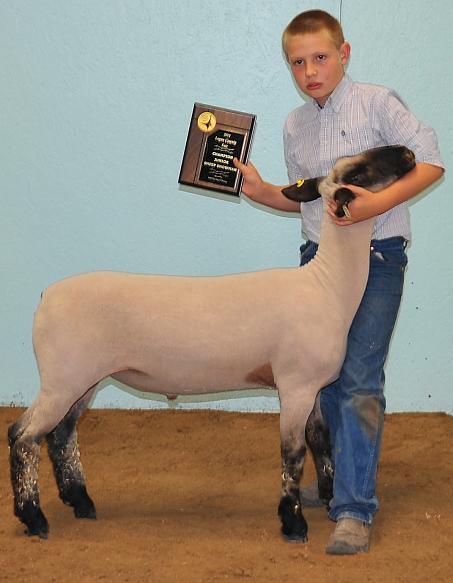
Those connections will likely grow,thanks to the supervised agricultural experience (SAE) Hannah is working on in FFA. The fouryear project she’s selected is running “mini livestock camps” for youth in Colorado and neighboring states.
It’s aprecurser to continuing the family tradition; she’s already planning to pursue an ag-related degree in college.




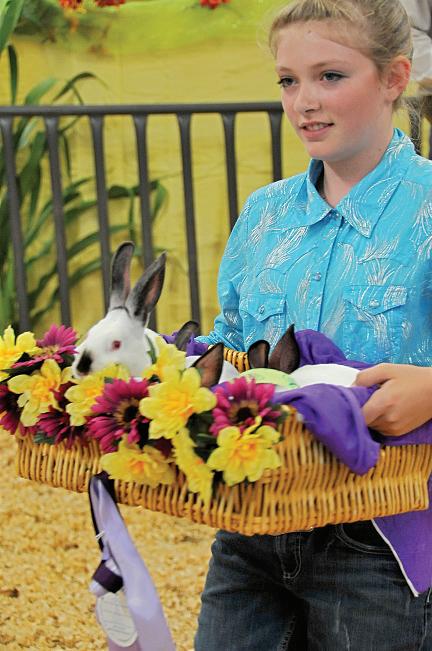
She’ll likely be joined by her siblings —“Ican’t see any of the four of them not being involved in agriculture at some level,” Linda said.

NICCOLI from page
41
LaceyNiccoli shows her reserve grand champion market rabbits at the Bud Van Berg Memorial 4-H/FFA Livestock Sale at the 2013 Logan County Fair
Sara Waite / Journal-Advocate file photo
The City of Sterling Salutes Agriculture in Northeast Colorado. Farmers,Ranchers,Growers, and Producers Play an ImportantRole in Contributing to Our Growthand Success. www.sterlingcolo.com The Roots Of Our Success Are Our Employees and Producers! The Roots Of Our Success Are Our Employees and Producers! 42 • SALUTE TO AGRICULTURE •FEBRUARY 28, 2014
Callie Jones /Sterling Journal-Advocate Tristin Niccoli shows his champion junior showman award at last year’sLogan County Fair.
AmessAge from Brett WAlters, generAl mAnAger, CArgill fortmorgAn
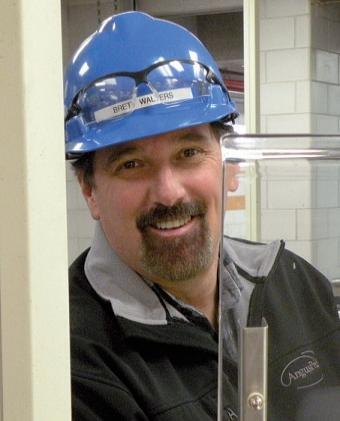
As Ireflect on the enormous contribution that the beef producers make to our lives, not only to us hereatCargill, but to each of us in northeast Colorado, Iamamazed. It is truly endless.
Cargill values community,ofgiving back, and working hardtoprovide for others whether it be our employees, our producers or the friends and neighbors we live and work near.

In the same vein, Cargill values agriculture, amost honorable profession, and its farm and ranch producers for helping create the quality of life that we all hold so dear.The amazing work ethic that farmers and ranchers possess is admirable. They often work from sun-up to sundown and many hours beyond to produce those commodities that we have come to rely upon and cherish.
Ispeak for the 2,100 employees of the Fort Morgan, when Isay ‘Thank You’ to these producers and suppliers of cattle. They grow the finest quality beef and have forged astrong working partnership with Cargill that is meaningful and profitable for all. YouAre Quite Simply - the BEST!

Thank you Northeast Colorado Beef Producers -
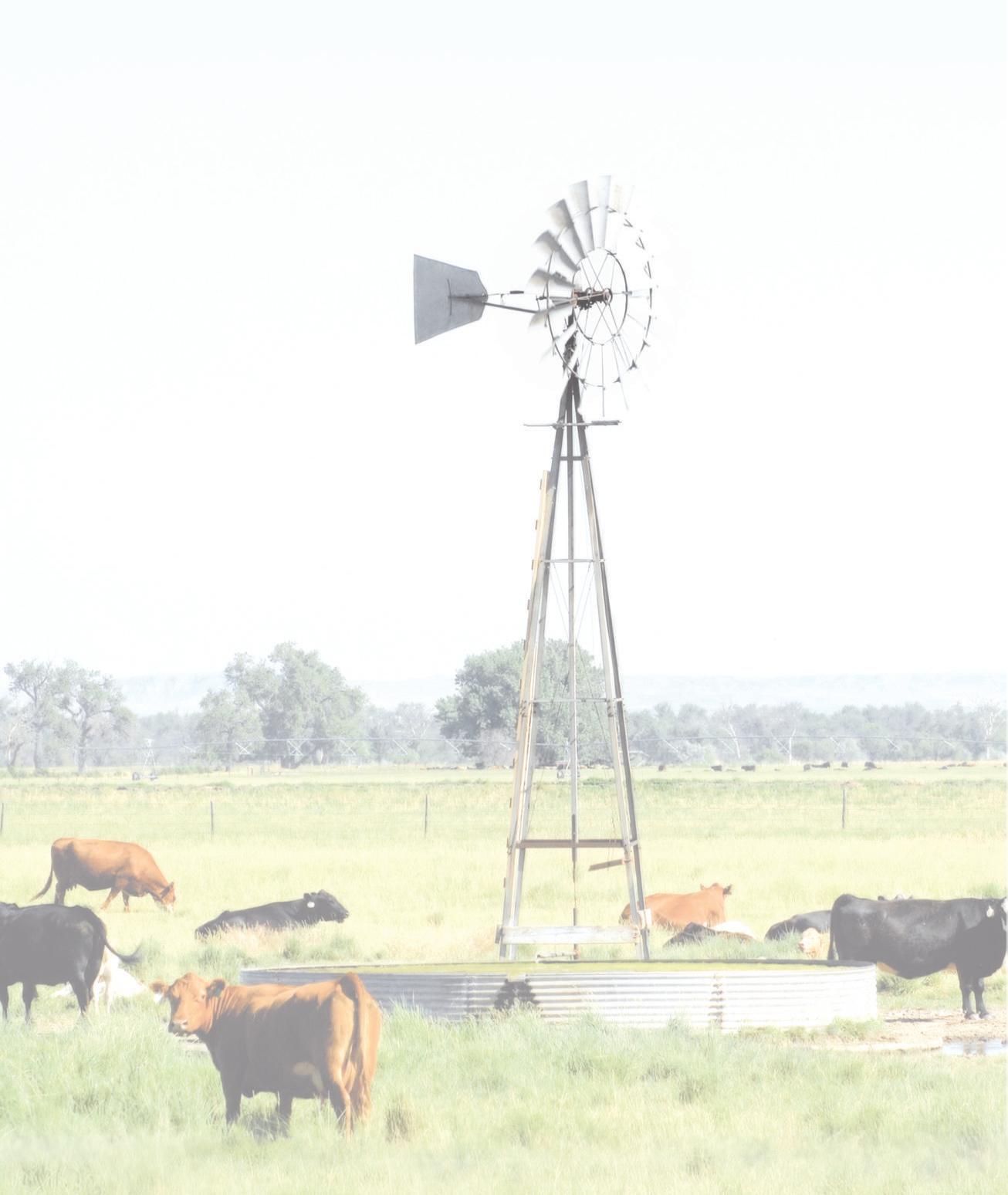
SALUTE TO AGRICULTURE •FEBRUARY 28, 2014 •43
Even playing field
By Rachel Alexander Times Editor
MORGAN COUNTY —When aprofessional sports team needs to replace the grass in its stadium, it doesn’t have afull year to wait for scattered seeds to grow into the lush field it needs.
Instead, they contact farmers who dedi-
cate acreupon acretogrowing high-quality turfand next thing you know —instant sports field.

One of those farmers is James Graffof Graff’sTurfFarminMorgan County
“We’ve really customized turfproduction,” Graffsaid about the 420-acrefarm northwest of FortMorgan. “Weexportalot of turfout of county and out of state.”
See TURF, pg.45
Turf Farm
Graff’s
Turf farm provides sod for professional fields, private lawns
44 • SALUTE TO AGRICULTURE •FEBRUARY 28, 2014
Courtesy photo /Fort Morgan Times Graff’sTurf FarmsinMorgan County provides the turf for CoorsField in Denver and several other Major League Baseball stadiums around the country.
TURF from page 44
With morethan 10 different types of grass growing at any given time, Graff’sprovides turffor residential, commercial, golf courses, sports fields and parks and recreation uses.

Graff’sTurfFarmwas started in 1979, by James’s parents, Randy and Betsy Graff. They started with 120 acres. James now owns it with Marty Thiel, along-time employee of the company.

The farmuses the latest equipment and technology to produce top quality sod blends that arerich in color, textureand durability,the farm’s website said.
“The sandy soil composition on the farmland provides Graff’sTurfFarms an excellent growing medium for sports turffacilities and golf courses, as well as the resi-
See TURF, pg.62
Courtesy photo /Fort Morgan Times
SALUTE TO AGRICULTURE •FEBRUARY 28, 2014 •45
Graff’sTurf Farmsislocated northwest of Fort Morgan with easy access to Interstate 76.
Hall of Fame
Many local honorees involved in agricultural education
 By Erin Nielsen Journal-Advocate intern
By Erin Nielsen Journal-Advocate intern
The FarmCredit Colorado AgricultureHall of Fame honors “those who have made significant contributions to our state and nation’s agricultural industry,”according to the Colorado FFAFoundation website, www.coloradoffafoundation .org.
The Colorado FFAFoundation’s goal is to support agricultural education in Colorado. So it’s no surprise that among the names listed in their FarmCredit Colorado AgricultureHall of Fame, many areeducators.
With the strong presence of agricultureinthe area, it’s
also no wonder that many of the honorees have ties to Logan and Morgan counties. Since its inception in 1989, the Hall of Fame has included local names.
The late Dave Hamil of Sterling (1909-2002) was among the inaugural class inducted into the Hall of Fame. The son of arancher, he went from the northeast Colorado plains to Washington, D.C., with stops along the way.Heserved in the Colorado Legislaturefor 16 years, and was the national administrator of the Rural Electric Administration for 14 years, working under four different presidents. He also served as the Director of Institutions for Colorado.
The Dave Hamil Building at the Overland Trail Museum is atribute to his contributions in bringing electricity and telephone systems to rural America, including Logan County through the Highline Electric Association.
In 1993, former NortheasternJunior College instructor HilbertKahl joined the Hall of Fame. Kahl (1921-1992) spent his 31-year career dedicated to agricultureand vocational education. In addition to serving as ateacher and livestock coaching at NJC, he was also chairman of the AgricultureDivision and dean of Vocational Education.
The 1995 class saw two
members with local ties. Naioma Benson’s family farmislocated in Logan and Washington counties. She served as national president of Women Involved in Farm Economics and also Colorado’s president, vice president and legislative chairperson. She was remembered for becoming the first woman to serve on Colorado AgricultureCommission and be appointed by two governors.
The agricultural teaching career of the late Dr.Irving C. Cross began at Logan County High School. He later taught at Colorado State University,and retired as head of the Agricultural Education System in 1983.
Jack Annan was inducted in 1998. Nicknamed “Mr NJC,” Annan joined the ag department at the college in 1966 and now serves as head of the NJC Alumni Association, overseeing the NJC Alumni Heritage Center.He and wife Florence Annan continue to supportagstudents therewith ascholarship that goes to students with an ag background who areactive in FFAand display leadership and academic excellence. Annan also serves as executive secretaryofthe Colorado Young Farmers.
Twomorelocals were inducted in 2002 and 2003.
See HALL OF FAME, pg.47
Locals’ ag contributions live on in
46 • SALUTE TO AGRICULTURE •FEBRUARY 28, 2014
Callie Jones /Journal-Advocate file photo Jack Annan, aka“Mr.NJC,”was honored by the college for his 80th birthdaywith the statue of him that sits on campus.
Thomas Keith Propst (19262003) of Merino was an active leader in agriculture for morethan 50 years. He was apresident in multiple organizations, including Colorado FarmBureau Insurance Company.Agriculture for him didn’t stop in the U.S. because he also reached out internationally to Europe and the Pacific Rim.


2003 inductee Helen Budin of Sterling was akey player in the beef industry. She helped establish the NortheasternColorado Cattlewomen’s Organization and also started the National Beef Cook-Off. She did not stop until all 50 states had participated.


AFortMorgan man, Robert“Bob” Eisenach, was inducted in 2004 for being an advocate and serving agricultureatmultiple levels. He was able to achieve much in the field of agriculture, from


starting offaspresident of Colorado FutureFarmers of America to being appointed as an executive director of the U.S. Department of Agriculture’s FarmService Agency.


In 2006, Elwin Swartz “Bud” VanBergwas honored for his contributions as

an auctioneer.The former head of the Sterling Livestock Commission was born and raised in Nebraska, and moved to Sterling in 1958. He helped with area benefit auctions, supporting organizations like the FFA, the American Red Cross, Hospice of the Plains and the





NJC Foundation. The Logan County Fair’s junior livestock sale is named in his honor
Former Colorado Commissioner of AgricultureDon Ament, inducted in 2008, is a northeasternColorado native and still farms in the Iliffarea. Ament served for

12 years as astate legislator, chairing the Agriculture, Natural Resources and Energy Committee.


Jim Read was inducted in 2010. The former Sterling resident served as aLogan County Extension agent for 20 years, and also worked in Cheyenne and Prowers counties. While in Logan County,hehelped startthe Great WesternBeef Expo and Sugar Beet Days. As an agent, he worked with advisoryboards to address local ag needs and improve farming practices and grain varieties.
The annual Hall of Fame banquet, when the newest inductees areadded, is held in conjunction with the Governor’s Forum on Colorado Agriculture. The full listing for the Colorado Agriculture Hall of Fame can be found on the Colorado FFAFoundation’s website, www.coloradoffafoundation.org.
HALL OF FAME from page 46
Bud VanBerg
Jim Read
Your Full Service Real Estate Agency •Residential •Commercial •Farm &Ranch •Building Sites For Further Information Call... (970) 867-3250•Fax (970) 867-3251 www.plainsrealtyllc.com 615 E. Platte Ave. Fort Morgan, CO 80701-2654 Chris
Don Ament
Ley Associate Broker
Don Neb Broker
John Clatworthy Associate Broker
Gene Doty Associate Broker
C P ! Mon. -Fri. 8am -5:30pm 100 Walnut Street Fort Morgan 867-2519 Complete Heavy &Light Truck &Auto Service Don’sDiesel and Auto Service SALUTE TO AGRICULTURE •FEBRUARY 28, 2014 •47
Allyn Wind Associate Broker
Sharon
Wardell Associate Broker
Old ideas, newuses
Fort Morgan tractor dealer: Bigger,more efficient aretrends
 By Jenni Grubbs Times Staff Writer
By Jenni Grubbs Times Staff Writer
FORTMORGAN —Jason Wickham’s face lights up when he talks about agricultural technology.
Granted, he is asalesman at the tractor and implement business his family started generations ago, Wickham Tractor Co. in FortMorgan.
But he gets genuinely excited about the latest and greatest things the industryhas to offer
Some of those new things areareturnto old things, he said.
For example, tracks arequickly replacing tires on new tractors and equipment.
“They’regetting skinnier to go down the rows,” Wickham said. “They originally were
brought to the agricultureindustrytoreduce soil compression,” and now the industryis finding they allow for moretraction in smaller spaces for the larger machines.
And larger is certainly the way farmequipment is headed, he said.
“Basically,inanutshell, everything is getting bigger and moreefficient,” he said.
Another technology that is changing the way farmequipment operates and how it is used is global positioning systems, or GPS.
“Obviously GPS has been out for several years now,but it has become moremainstream in these tractors,” he said. “Beforeit was an add-on.”
One of the things that GPS built into farm equipment allows is yield mapping, Wickham said.
See TECHNOLOGY, pg.49
Ag Technology
Rachel Alexander /Fort Morgan Times
48 • SALUTE TO AGRICULTURE •FEBRUARY 28, 2014
Tracks are replacing tires on manytractors, such as this one driven by an FFAmember on Main Street during National FFAWeek. Jason Wickham, of Wickham Tractor Co., said the tracks allow for traction in smaler spaces for the larger machines.
“With GPS, we can then tell where to use moreorless fertilizer in areas,” he said. “It’s like aprescription they come up with for how to get better yields for the following year.”
He said thereare Morgan County farmers already doing this.
And while drones and other automated technology could have applications in helping with things like this, Wickham said this is still aways offin the future.

“The technology is out therefor a guy to be sitting at his desk and be running four tractors,” but the government has not approved it yet, amongst “worries about it going rogue.”
Tighter government regulations of emissions from all diesel vehicles also arechanging farmequipment and technology.The U.S. Environmental Protection Agency soon will regulate the emissions on farmequipment, Wickham said.
“Their goal is to have the air that comes out be cleaner than what goes in,” Wickham said. “It’s affecting everything. It is causing moretechnology to go into the engines, and thus costs go up.”
Right now,thereare no requirements to retrofit older farmequipment to meet the diesel emissions restrictions, he said, “but it is on the horizon.”

Another possibility he has heard some talk about, Wickham said, could be some sortoftax credit “to incentivize farmers getting new equipment.”
Obviously,that type of government intervention would benefit his business and other northeast Colorado tractor and farmequipment dealers, such as 21st CenturyEquipment, but it also could put an insurmountable burden on the agricultureindustry. That’s all theoretical at this point,


though.

Other new technologies in farm equipment areseeking to make better use of scarce natural resources, such as water,Wickham said.
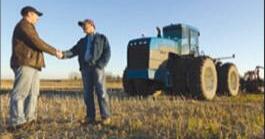
Drip tape is something that some Morgan County farmers have started experimenting with in their fields, he said. It allows for underground irrigation by running water underground that “goes directly to the roots of the plant,” Wickham said.
This process requires a“quite large” initial capital investment, though, so it is not something widely used at this point, he said.
“But as water gets moreand more expensive, those initial costs balance out,” he said.



Describing new farmequipment is something that gets Wickham’s face glowing again, though.
“Twin-row planting: Instead of planting asingle row, plant two rows seven inches apart,” he said of anewer type of implement. “It allows for better water usage, and studies show it increase the yields per tons per acre for acreage corn.”
Wickham said that higher production using less resources is the point of upgrading equipment and of the innovations that go into the new equipment.
“According to Case IH, our population’s going to double, and the ag community’s going to have to supply huge amounts of morefood with the same resources,” Wickham said. “The way we’regoing to do that is with technology that is moreefficient.”
He said he expects the United States agricultural producers to lead the way.
“The world looks to the U.S. for how to better produce food,” he said. “And that’s what all this technology is doing.”
from page 48
TECHNOLOGY
SPELTS ROOFING Serving The Area ‘Since 1969’ Full Warranty on all Roof Systems Benefitstorepeatcustomers! Aname you know. Aname you can trust. All year around for 40 years. We will meet or beat any reasonable offer and we will be here in the future. LOCALLYOWNED ImportantNotice: Foryourprotection, We are fully insured&bonded. We will provide liability insuranceand workmens comp certificates. Residential •Metal •Asphalt Shingles •Modified Shingles with Class 4Hail Impact Resistance For Free Estimates &Inspections Sterling: 970-522-1925 For Morgan 970-867-1162 TOLL FREE: 800-932-5733 “Weonlycometoyourhouse when invited” spELTs ROOFING Call or come see one of our loan officers for moreinformation Just getting started? Let us help with the Beginning Farmer Program in conjunction with Colorado Agricultural Development Authority (CADA). •Finance Agricultural Land and/or Farm Equipment •Below Market Interest Rates *Borrower must be a“Beginning Farmer” (an individual who has never owned farmland which is equal to or greater than 30 percent of the median county farm acreage). Loans arenot guaranteed by the government or by CADA. The borrower must be aresident of Colorado. Borrower must be involved in ag production on the land which is purchased. For complete Beginning Farmer Program details contact First Pioneer National Bank or the Colorado Agricultural Development Authority P.O. Box 96 Wray,CO80758 •970-332-4824 P.O. Box 27 Holyoke, CO 80734 •970-854-2227 www.efpnb.com SALUTE TO AGRICULTURE •FEBRUARY 28, 2014 •49
Student organization offers opportunities, rewards
By Erin Nielsen Journal-Advocate intern
FutureFarmers of America is an organization that provides opportunities for all students to develop leadership skills, along with many others. The Sterling FFA chapter is just one of the many in the Logan County area and this year alone they have had alot on their plates.
The year started when they participated in the Ag Olympics competition at the Logan County Fair.Since

Sterling chapter in midst of busy year
then they have hosted the Sterling FFAMothers’ Club Chili Supper,held aspeaking contest for chapter contestants in prepared, extemporaneous and creed speaking, attended and competed at the National FFAConvention in Louisville, Ky., and participated in aprogram called Reading is Fundamental at AyresElementary School, whereFFA members read to kindergarten and first graders.
Last week they also partic-
ipated in Food for America. They visited Ayresand to a local daycareand spoke to kids about the importance of agricultureand other aspects of the subject, including soil layers and wheremeat comes from. Yetthat isn’t all they do.
They also have aweekly radio show called the FFA Roundup on 105.7 KPMX at 6:30 a.m. everyThursday
Events coming soon are district and state competi-
tions. Districts will be held Feb. 26 for speaking events, parliamentaryprocedure and Quiz Bowl, and districts for the other career development events will be held in April at NortheasternJunior College.
Many students will be participating in districts. The Sterling FFAChapter will have two contestants in prepared public speaking at districts: Tara Cook and Daniel Sonnenberg; one contestant in extemporaneous speaking
at districts: Emma Scholz and two competitors in the creed speaking contest at districts: Abbey Brower and Hunter Rogers. Aquiz bowl team consisting of three freshman members will also compete at districts. Several other Career Development teams will be competing at districts as well.
The state competition for the career development events will be held May 4-5 at Colorado State University The state competition for the public speaking events as See FFA, pg.51
Sterling FFA
Journal-Advocate As part of FFAWeek Feb. 15-22,
50 • SALUTE TO AGRICULTURE •FEBRUARY 28, 2014
Callie Jones /Sterling
Sterling FFAmembersdrove their tractorstoschool one day.
well as parliamentaryprocedureand quiz bowl will be held at state convention in Alamosa this year.

One of their main fundraisers is their annual Oyster Fry, which will be held on March 11; the location hasn’t been set yet. Prices of the tickets are$10 for adults, $8 for high school students and ages 5-14 are$5. To purchase tickets, people can get them at the door or they can get them from any FFA member
YetFFA is not just about competing in events.


“FFAisanorganization that has endless opportunities for its members. Students areable to compete, travel, gain leadership skills, starttheir own business, research, make connections with people, and most of all gain alife-long appreciation
and awareness of the agricultureindustryand how important it is,” said FFA president, Tara Cook.
Agricultureiseverything for these students and most
of them areverypassionate about it, including Cook.
“I feel that agricultureis veryimportant because without it, we have nothing to eat, no material for cloth-
ing, and nothing to build our homes with. Agriculture encompasses so much more than just farming and ranching. In the United State, 22 million jobs depend directly
on agriculture. The agricultureindustryhas the responsibility of feeding the growing population and to me that is veryimportant,” said Cook.
Many of the senior members of Sterling’s FFAchapter aregoing to continue on in the field of agriculturein one way or another and if they don’t, Cook said that she felt that the other members will be able to use the skills they learned later on in the future.
Jason Klinzmann plans on being alarge animal veterinarian and Matt Brower and Scott Rosas both plan on getting adegree in agriculture business. Cook plans on going to college and getting into the agriculturefood and science industry.
“My advice to younger FFAmembers would be to seize everyopportunity given. FFAoffers so much, and don’t be afraid to trysomething new or scary, because in the end you will be rewarded,” said Cook.
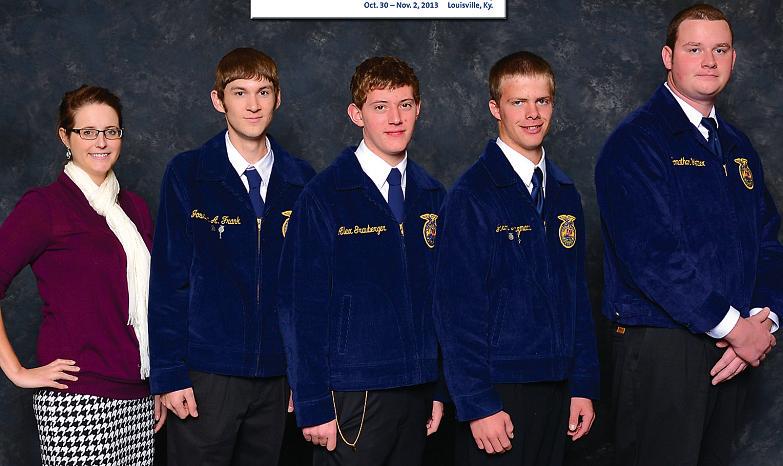
FFA from page 50
Courtesy photo
NOW LOCATED AT 1010 W. Platte Avenue in Fort Morgan Still open at 501 Edison Street in Brush www.korfautogroup.com | SALUTE TO AGRICULTURE •FEBRUARY 28, 2014 •51
The Sterling FFAagricultural technologyand mechanical systems Career Development event team wasawarded aGold emblem at the 2013 National FFAConvention. From left, are chapter adviser KaseyKinney, Joshua Frank, Alex Grauberger,Jason Klinzmann and Jonathan Yetter.
Welcome to Amen Angus
Family-run operation goes back generations
 By Sara Waite Journal-Advocate managing editor
By Sara Waite Journal-Advocate managing editor
It’s calvingseason in Amen country. That’s not apolitical or religious designation, but afamily one. The operation now known as Amen Angus Farms has been in the Amen family for four generations —and now they’reworking on afifth.

Ken Amen “fell in love” with the Angus breed as asophomoreatCrook High School. His father,Walter,owned Herefords at the time, but made the switch. That was morethan 50 years ago, but the love affair continues. Ken says Angus cattle “fit all segments of the industry, from us through the packer.” He called the breed “trouble free” and said they have good maternal traits.
Ken’s grandfather purchased what was then asheep farm, and handed it down to Walter.Ken and son-in-law Mat Lewis now runthe operation, which also includes growing corn, alfalfa and irrigated grass, and selling seed cornfor Pioneer Hybrid.
It’s been abusy day,with at least 10 new calves added to the herd. Ken doesn’t want to talk about how many head he’s got, or the size of their acreage, but notes that it is acombination of owned and leased land, like many other farms in Logan County and across northeast Colorado. And, he said, “it’s enough to provide most of our income.”
It’s also big enough to be home to most of the family.Ken and wife Bonnie’s neighbors include Walter,Mat and daughter Wendy Lewis and their children, and youngest daughter Heather Forster and husband Mike and their child. Their other daughter,Heidi Griffith, her husband Virgil and their four children live in Morgan County.All told, Ken and Bonnie have nine grandchildren.
The family ties go beyond location. Ken and Bonnie met on the livestock judging team at NortheasternJunior College; Wendy and Mat did likewise years later
The older generation went on to Colorado State University,while Mat and Wendy did their graduate work at Minnesota University
Ken said he finds his college degree is a “big benefit” in his work. He said he doesn’t think everyone who wants to go into agriculturehas to pursue higher education, and he understands why many don’t. “But we feel it’s important,” adds Wendy,who teaches online college classes.
That’s an example of the ways tradition has changed, both on and offthe farm, Ken notes. Students can attend classes and still be at home working, although Wendy SeeAMEN ANGUS, pg.53
Below: The sign lets you know you’ve arrived on Amen Angus Farms, located between Crook and Iliff, which has been home to four generations of producers, with afifth generation growing up now.
Sara Waite / Sterling Journal-Advocate
Right: The Amen family gathersfor afamily photo that is placed in the Amen Angus Farmsbrochure for their bull sales each year.
52 • SALUTE TO AGRICULTURE •FEBRUARY 28, 2014
Courtesy photo
notes that thereare additional benefits outside the classroom to the college experience.



Ken says his workday starts pretty early,but isn’t much different “than anybody else that goes to work in the morning.” However,the work isn’t repetitive if it is, it doesn’t last long, he said.
The lifestyle they chose is not without its challenges, of course. Ken said the cattle business has found a“happy medium” after struggling with animals that weretoo small back when he was starting out, then got to be too big in the ‘80s.
He said it can also be difficult to figureout the right size for an operation to provide a“reasonable income.” Wendy said the marketplace has changed, shifting farming from aproducer-driven process to a consumer-driven one.
Water is always aconcernfor farmers in this water-deficit state, but the Amen farmhas survived from atime when, as Ken says, they weretrying to figureout “how to make the water run,” to now,when
sprinkler systems move the water for them. And soon, he predicts, moreefficient in-ground drip irrigation systems will replace those sprinklers to help conserve morewater.
Ken also mentioned the opposition to genetically modified crops, but said it’s been going on for so long, “we probably don’t pay as much attention to (the opposition) as we should.” He said most of those opposed aren’t educated about the issue, and that there’s no evidence that it affects the crops that areconsumed by cattle or people.
Other changes that he’s seen in his decades as afarmer include advances in breeding that allow them “to make mistakes quicker.”
“Or,ifyou do it right, then you’re in good shape,” he adds.
He notes that they manage the herd’s genetics and synchronize the breeding, choosing aselect few bulls for artificial insemination of their cows. When calving season comes, thereare days that remind them of what they did in the spring.
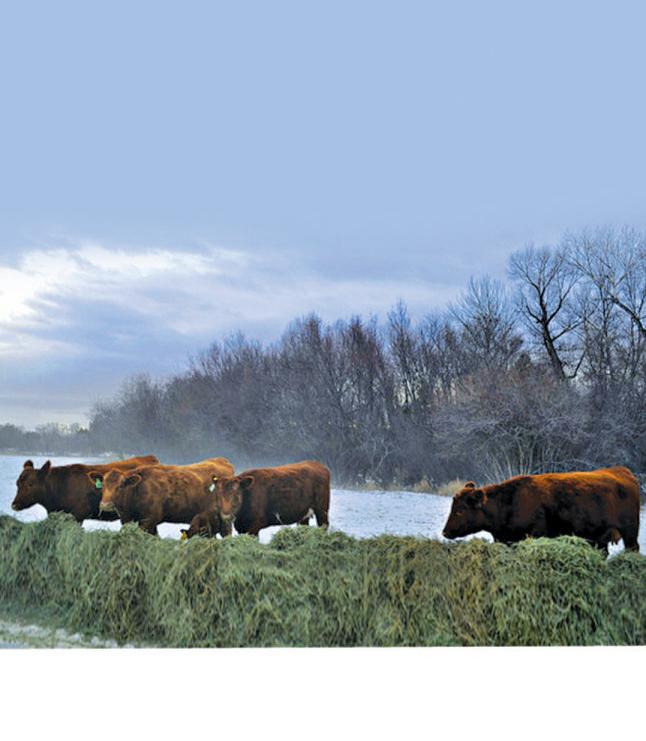
But what they’redoing is working,
if the accolades they’ve received from the American Angus Association areany indication. Just last year, they wererecognized by having 11

Angus cows included in the association’s annual Pathfinder Report, which included only 1,992 out of morethan 25,000 members. It’s an affirmation that they areachieving their mission, “to provide functional, predictable cattle that will increase value in our customers’ herds.”
Ken said belonging to the association provides benefits like analysis of their production recorddata, allowing them to comparetheir herdto the whole breed across the nation.
The changes aren’t limited to technology.The federal government has shifted its stance on agriculture, Ken said, and is moving moretowards regulation. While it’s important to pay attention to what’s going on at that level, Wendy said, it can’t be the only thing that drives the producer
On the Amen farm, the key is family,and also acalling to be apartof the agricultural system that feeds the nation.
Bonnie said she was grateful for the chance to raise their three daughters on the farmand see them all continue in ag-related careers.
And she enjoys having her grandchildren close by,whereshe can watch them grow up in the same lifestyle. Mat and Wendy’s oldest daughter is studying animal science in college, while the younger children arealso interested in farmlife and areactive in 4-H.
“Wechose (this lifestyle) because we wanted to be apartofagriculture,” Ken said. “Wewanted to raise our family in the country,”where they’renot isolated, exactly,but “This is so much different than downtown America. It’s amazing to me that people 30, 40, 50 miles away don’t know whereCaliche (School) is.”
Wendy added that she feels privileged to “provide food that’s placed on everytable.” and blessed to be working with God’s creation on a daily basis.
And ultimately,Ken said, “It’s our responsibility to leave it better than when we got it.”
AMEN ANGUS from
52
page
970-867-3021 119S.Main,Fort Morgan Power Up. We’ve got the motors, drives and controls to keep your business running strong. FarmDuty,Industrial, HVAC Motors, Soft Starts, Starters,Motor Repair Agriculture, It’saway of life, alove of independence, aresilient culture that strives to feed the world! SALUTE TO AGRICULTURE •FEBRUARY 28, 2014 •53
Pieces of history
Centennial Farms program recognizes historic farms, ranches
 By Sara Waite Journal-Advocate managing editor
By Sara Waite Journal-Advocate managing editor
In the OverlandTrail Museum’s High Plains Education Center,thereisagiant book.
Each page of the book is the size of aposter board— because that’s what it’s made from —and covered with the historyofhistoric Logan County farms.
What makes these farms so special is that they can trace their historyback 100 years through the family tree.
Logan County is home to 15 Centennial Farms that have been recognized by the Colorado Department of Agricultureand HistoryColorado, the state’s historical society. According to aplaque on the Centennial Farms display at the museum, “the program recognizes the significant role agriculturehas played in our state’s historyand economic development.
“In atime when family farms and ranches aredisappearing in Colorado, these Centennial Farms and historSee HISTORIC, pg.55
CENTENNIAL
FARMS
Callie Jones /Journal-Advocate file photo
54 • SALUTE TO AGRICULTURE •FEBRUARY 28, 2014
Families from Logan County Centennial Farmswere honored as parade marshals for the 2013 Logan County Fair
ic ranches serve as a reminder of the heritage of the West, preserving irreplaceable pieces of Colorado’s cultural, commercial and settlement history.”
The oldest Logan County operation on the list was honored when the Centennial Farms program debuted in 1986. The Bar Three Ranch in Merino was founded in 1876 by the Propst family.
Their pages in the museum book tell of the celebration when the ranch turned 100 in 1976, and drew family and friends from across the nation. “People from across America marveled that so many others had come to a gathering wheremany were strangers,” the display reads.
“They came to aconsensus that people had come because families matter.
They arethe foundation of civilization. Their children
Morgan County Centennial Farms
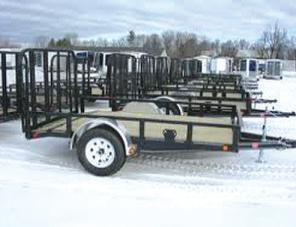

Killough Farms, Brush. Settled in 1898, awarded in 2003.
George W. Warner Farm, Fort Morgan. Settled in 1881, awarded in 1988.
The Elms, Fort Morgan. Settled in 1885, awarded in 1991.
Jones Farm, Weldona. Settled in 1906, awarded in 2006.
Kammerer Farm, Weldona. Settled in 1900, awarded in 2001/2.
Hogan Farm, Wiggins. Settled in 1910, awarded in 2010.
arethe hope of the future. And they felt pretty proud of themselves, by golly.”
Also on the list are:



•Held Farm, Fleming. Settled in 1889, awarded in 1989.
•Peter Lantz Farm, Fleming. Settled in 1889, awarded in 1989.
•Lazy 3N Ranch, Fleming. Settled in 1890, awarded

in 1990.
•Bauder Farm, Fleming. Settled in 1907, awarded in 2007.
•Morison Farms, Fleming. Settled in 1908, awarded in 2008.
•Wagon Wheel Ranch, Fleming. Settled in 1908, awarded in 2008.

•Grauberger Farm, Fleming. Settled in 1887, awarded

in 1997/8.
•Everett and Nannie Davis Family Farm, Haxtun area. Settled in 1909, awarded in 2009.
•Larson/Carlson Family Farm, Haxtun area. Settled in 1909, awarded in 2009.
The Centennial Farmsexhibit is abook made up of displayboards depicting the historyand present dayof life on the century-old family farms and ranches.
Sara Waite / Sterling
•Scott Farm, Haxtun area. Settled in 1909, awarded in 2009.
•Rieke Pasture, Padroni. Settled in 1887, awarded in 1988.
•Knudsen Farm, Sterling. See HISTORIC, pg.65
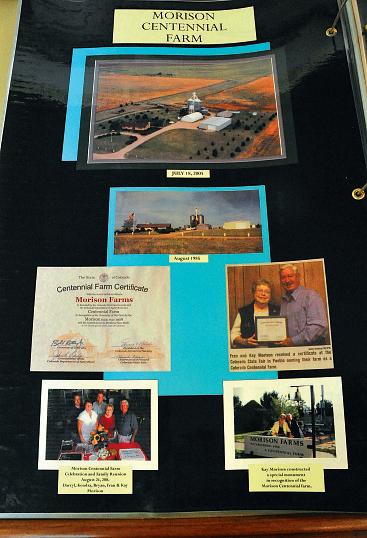
HISTORIC
54
from page
Journal-Advocate
Roy’s CountRyFaiR
save aLot! Roy’sCountryFair East Highway 34 in Yuma, CO. 970-848-2661 The Pursuit of Happiness Roy’sCountryFair East Highway 34 in Yuma, CO. •970-848-2661 Workhorse SALUTE TO AGRICULTURE •FEBRUARY 28, 2014 •55
DRive aLittLe
Two-way street
NJC rodeo team reflects ties between sport and ag industry
By David Wilson Journal-Advocate sports writer
STERLING —Agricultureand rodeo go hand in hand.
Unlike other popular sports, many of the events that make up rodeos, at their core, have come from everyday work duties during the early years of ranching and farming.
Those daily chores and the working relationship between farmers and ranchers with their animals slowly evolved into competitions.
Tie-down roping and team roping to rein in cattle, and bronco riding for horse breaking arejust afew popular rodeo events that originated in the 1700s from the Spanish and then made their way to America in the
early 1800s.
The cultureand sportstarted to expand offofranches and public arenas onto college campuses around the time of World WarII. The governing body that oversees it, the National Intercollegiate Rodeo Association, was set in motion in Alpine, Texas, in 1948 and the first NIRA National Convention was held in Denver on April 14-15, 1949, according to the NIRA website.
That trail of historyhas also made astop in Logan County with the Northeastern Junior College rodeo team.
But beforethe spectacle that rodeos like Cheyenne Frontier Days and the Greeley Stampede became —and beforethere werestudent-athletes for collegiate and high school rodeo —the sportstarted
See RODEO, pg.57
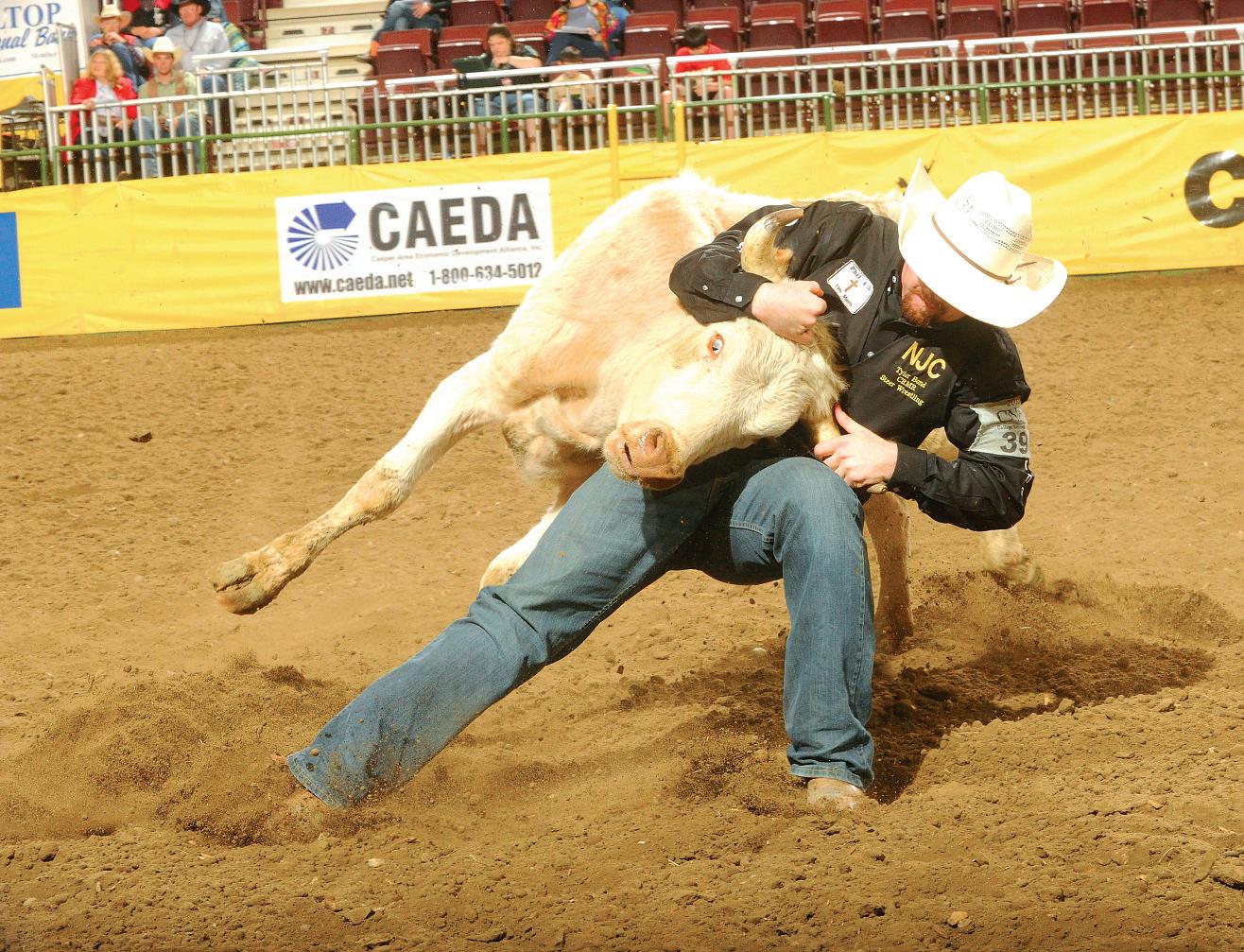 Courtesy photo
Courtesy photo
56 • SALUTE TO AGRICULTURE •FEBRUARY 28, 2014
NJCsteer wrestler Tyler Bond tackles asteer during arodeo earlier this season.
innocently on cross country cattle drives.

Much like auto racing’s startinthe years following, rodeos evolved from simple, informal competition between cowboys to see who was the best and fastest man at what was their livelihood, to now popular spectator sports.

“Rodeo started from cowboys wanting to prove they werethe best at things they weredoing everyday already,fromrestraining livestock to be processed and doctored, to team roping and calf roping,” NJC rodeo coach Brian Cullen said. “Therewas spin offs from those events to see who had the fastest horse in barrel racing, training horses to see who could ride the one that bucked the most, and those types of things. That’s where rodeo got its roots.”
One of the unique charac-
teristic that separates rodeos, and the cowboys and cowgirls that compete in them, from the typical sport arethe variables that come with the livestock.
Having agood horse, calf or bull can be the difference between first-place runand going home empty handed for arider,despite his or her talent level.
For sophomoresteer wrestler David Hinman, that dynamic working partnership with the animals is part of the sport’s charm.
“It’s kind of like gambling on your talents,” said Hinman, who made it to the college rodeo finals last year and currently sits first in this year’s Central Rocky Mountain Region steer wresting standings. He is also in second place in the all-around and thirdplace in tie-down roping. “You have to draw a good steer or calf and you
have to be riding the best horse you can be on because, in reality,you’re only going to be as good as the horse underneath you. It’d kind of an addicting lifestyle. Once you get into it, it’s really hardtoquit because it’s just ablast going down the road going from rodeo to rodeo.”
After taking four months offbetween November and February, the NJC rodeo team members will be back on their horses in competition on March 14-16 at Gillette College in the first of the five remaining rodeos this season.
Through the first five rodeos, the NJC men’s team sits in sixth place out of 13 teams, while the women are currently in ninth out of 11 teams in the Central Rocky Mountain Region standings.

NJC won’t host arodeo of its own this season —itwill compete on April 11-13 in FortCollins at the Colorado State University rodeo —but
Trinidad has served area bean growers since 1921. Our relationship with growers is based on EXCELLENT customer service, INTEGRITY in business practices, and SUPERIOR categoryand product knowledge.

Trinidad has also become a significant employer in the community of Sterling. The Sterling plant packages beans, rice, and popcorn for the retail groceryand food service trade.

Cullen said the community supportthe team receives and has received in past years from the agricultural community has been outstanding.
“Wehave aton of community supportand we’ve had community members help supportusfinancially. They’ve supported us maybe with donations or given the supportyou really need with the phone call of encouragement,” Cullen said. “Wehope it has provided acommon interest for our community to get behind and if you look at our trophy case, with messages of encouragement from community members, we’ve just really received a lot of supportand we’re proud to be from Sterling.”
The supportbetween the rodeo team and Logan County has been atwo-way street, as well.
Cullen said the team members buy feed, hay and grains from Logan County farmers for their 60 horses


housed at the NJC boarding facility,while the stock of cattle the team uses in practice, and the health careand food for those cattle, the college purchases locally.
“All of those agricultural inputs come from right here in Logan County and we’re veryfortunate to be so close to so many good resources and being able to utilize those for our team,” Cullen said. “It takes alot of different components to make this whole thing come together.”
RODEO from page 56
The Bobcat S770® skid-steer loader gives you legendary Bobcat versatility, maneuverability and productivity –and the ability to do just about any job faster and better.
Authorized Bobcat Dealer 970.522.7849 bobcat.agteckrepair.com Parts. Service. Sales Rental.
Courtesy photo NJC sophomore steer wrestler David Hinman
Bobcat
® and the Bobcat logo aretrademarks of Bobcat Company.
1500 Right of WayRoad 522-3595 www.trinidadbenham.com We Salute the groWerS, buSineSSeS, and community memberS of logan county. SALUTE TO AGRICULTURE •FEBRUARY 28, 2014 •57
Gentle Spirits
Alpaca
By Dan Barker Times News Editor
Gentle Spirit Alpaca Farmjust southwest of Wiggins started with one male alpaca followed by asmall herd--and another small herd.
Today,the farmowned by Rick and Nancy Holloway has 150 head of alpacas the little
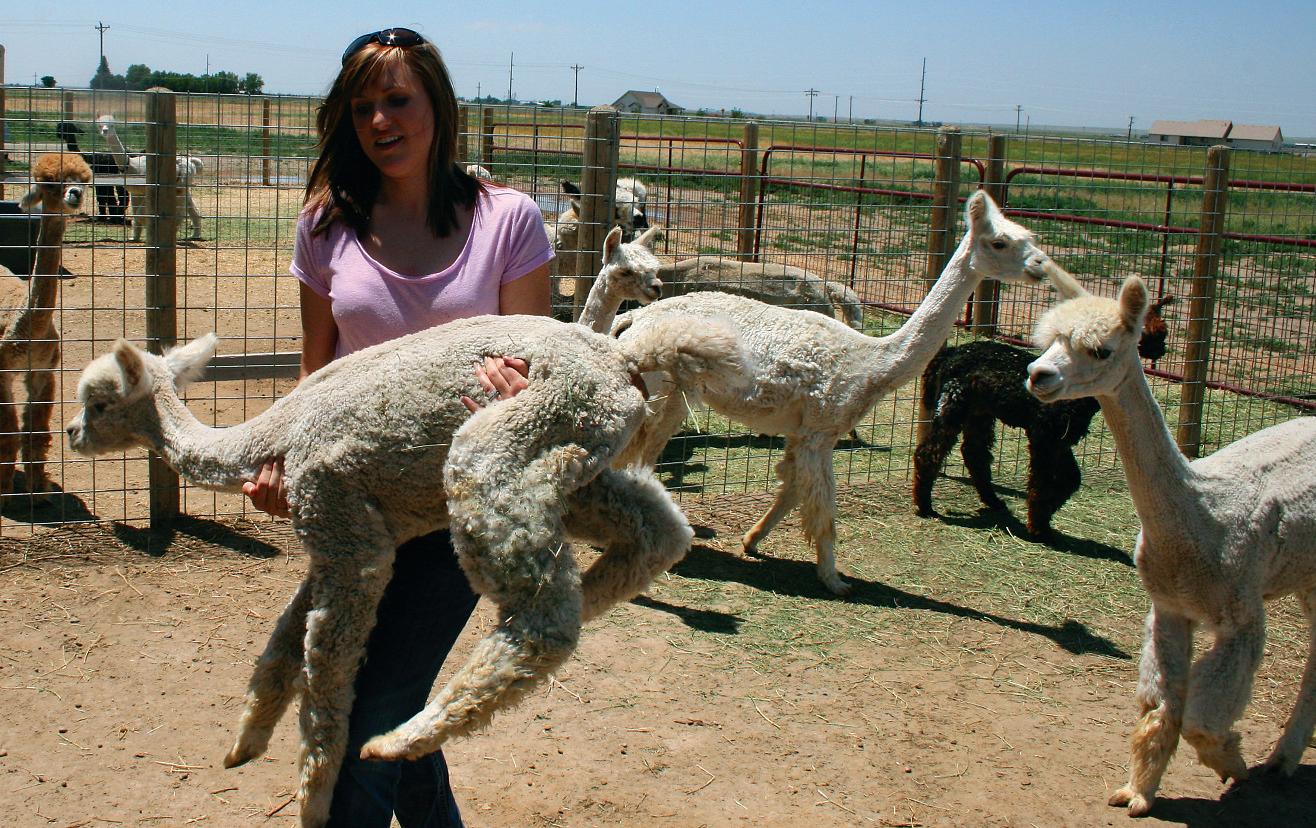
South American animals related to llamas and they sell well. The couple also boards alpacas for people who do not have aplace to keep them.
The Holloways also sell the hair fiber that looks like wool, but is only called fiber,yarn made of the fiber and goods such as rugs, socks, sweaters, gloves and hats made of the fiber,Rick said.
See ALPACAS, pg.59

farm near Wiggins is still growing strong
58 • SALUTE TO AGRICULTURE •FEBRUARY 28, 2014
Dan Barker /Fort Morgan Times CarlyBusch carries ayoung alpaca. Theygrow to be about 120 to 200 pounds. She is the grown daughter of the ownersofthe Gentle Spirit Alpaca Farm.
Yarn comes in many colors. That includes the natural colors that range from black, white, brown, tan and gray,plus almost any dyed color anyone could want.
The black fiber will not fade, unlike many black clothes or items, because it is natural, said Carly Busch, their grown daughter who lives nearby and still helps at the farm.
The Holloways started Gentle Spirit about five years ago, afew years after they moved to the area, Rick said. Nancy wanted the fiber for her knitting.

Now,they areinvolved with everyaspect of the alpaca industry, he said.
The couple transports from six to 10 alpacas to six to 10 competitive shows each year in places all over the U.S. One of the largest shows is held at the National WesternStock Show in Denver.
Nancy takes the fiber and goods to sell at farmers markets, flea markets, fiber shows and craft shows about 15 to 20 times ayear
It all adds up to profits.
Thereare three general classifications of alpacas. Fiber animals areused for producing the raw fiber and fiber products; those are usually males. The average female can sell for $4,000 to $8,000. Show quality alpacas can sell for $8,000 to $30,000,
Rick said.
The moreribbons and awards the animals win, the higher the value of those animals and their offspring, he said, and his alpacas win ribbons all the time.
Thereare about 475 alpaca farms in Colorado and there areperhaps 300,000 alpacas in the U.S. Importation of the animals was blocked in 1998, so the market consists of the alpacas that had been brought to the U.S. and their
offspring.
The value of alpacas is differentiated by the quality of their fiber.People look for finer,softer hairs.

“That’s what you’retrying to breed for,” Rick said, adding he is always trying to improve the line of his animals.

Alpaca fiber makes some of the warmest clothing around, and it is not scratchy like sheep’s wool, he said. It is also durable and versatile.
For instance, alpaca socks arewarminthe winter and cool in the summer.
The individual hairs have hollow cores that create insulation, Rick pointed out.
That comes naturally to an animal that originated in the Andes Mountains of South America. In fact, Colorado is agood place to raise them, because it is relatively dry and they areadapted to the cold.
Thereare two breeds of
alpacas. The suri breed has fine, silky fiber that clumps together and looks like mop strands. The huacaya breed has moredense, fluffy fiber that is also “crimpy,” Rick said.

About 80 percent of alpacas in the U.S. areofthe huacaya sort. Suri fiber is used for moreformal garments, he said. Those kinds of fibers areprocessed differently
About half the size of the llama, alpacas weigh from 120 to 200 pounds, and are easy to handle.
Llamas arehelpful in watching over the herd. They will let out acry that alerts the big dogs at the farmthat they should check on the herd--even if the dogs had been asleep, Rick See ALPACAS, pg.60
ALPACAS from page 58
Dan Barker /Fort Morgan Times
Rick Holloway cozies up to Peterbilt, one of the most friendly of his alpacas.
Country Steak-Out Restaurant &Lounge www.countrysteakout.com Steak •Seafood •Daily Breakfast &Lunch Buffet Banquet Facilities •Special Events 19592 E. 8th Ave.,Fort Morgan, CO 80701 970-867-7887 •countrysteakout@hotmail.com Next German Buffet March 29 SALUTE TO AGRICULTURE •FEBRUARY 28, 2014 •59
Thereare about 475 alpaca farms in Colorado and thereare perhaps 300,000 alpacas in the U.S. Importation of the animals was blocked in 1998.
said.
Some llamas have been known to stomp coyotes to death.
While people in the U.S. do not eat the lean alpaca meat, natives of South America do and thereare some places in Canada wherethey areeaten, Busch said.
The alpaca industrywatches over the animals carefully. Each individual animal is registered under aname much like purebred dogs and each is DNA tested to verify bloodlines, Rick said.
All of the alpacas at Gentle Spirit have microchips in them, Busch said.
Raising alpacas is aslow process, since their gestation period is 335 days, just shortofayear.Twins are rare, and one twin generally does not survive, Rick said.
They arebornat12to20 pounds, which is alarge percentage of the mother’s weight, Busch noted.
Gentle Spirit is always open to farmvisits, Rick said, even to those who are not interested in buying. In fact, it gets visits from schools and clubs.
Alpacas aregentle, easily handled animals that can be trained to halters, and each has its own personality, Busch said.

One frequent question is whether alpacas “spit” like llamas, she said. They spit at each other when they are fighting or upset, and people can get caught in it, but they do not spit at humans on purpose.
Fights do break out among the males, who arein one corral. If the fight gets too out of hand, the watch llama often breaks it up, Rick said.
Therewas atime when people believed all males must be kept in individual
areas, away from any other males. But experience has shown they can get along and thrive. After all, they are herdanimals, he said.
The farmhas pens and corrals set up for different needs. Pregnant females may be kept in one with some young alpacas. Another may hold new animals while they acclimate to the others. The babies called “crias” like to romp around together,Rick said.

Each alpaca consumes about three pounds of alfalfa hay mix aday,which adds up to quite abit with 150 animals, he said. He buys the hay from local producers in Brush and Hudson.
The farm’s day begins with making surethe alpacas arefed and watered. The owners trytokeep their weights consistent, and will put them in individual pens if they lose too much weight.
Although the corrals are not huge —since the animals arenot large —itstill takes two or three hours a day to clean them out, Rick said.
They shear the animals in
May,which keeps them cool and still allows the hair to grow enough to be ready for the shows that runfrom October to May,Rick said.
The attraction of alpaca raising is “the lifestyle,” Rick
said. They arerelatively easy to manage, and retired people often enjoy raising them. It is arelaxing and calming life.
They aremorefun, easier and lower maintenance than
cattle, Busch said. For moreinformation, to schedule avisit or to buy products or animals, call 719661-8646 or 719-648-6252. Or visit the Webatgentlespirit alpacafarm.com.
ALPACAS from page 59
Photos by DanBarker /Fort Morgan Times Rick Holloway has about 150 alpacas on the Gentle Spirit Alpaca Farm near Wiggins. The number has grown over the five yearssince his family started the business.
60 • SALUTE TO AGRICULTURE •FEBRUARY 28, 2014
“Sundance” is held with a halter by Carly Busch at the Gentle Spirit Alpaca Farm.The animals are easy to handle.
for the futureand the cows in his own commercial stock.
One niche market that is trickier for cattle producers is understanding and appropriately meeting the demand for organic beef, Duane said.
“It’s not as big of a demand anymoreand is verymuch aniche market,” Duane said. “It’s veryexpensive to produce, with no chemicals and no pesticides. It’s not the most efficient because of no antibiotics. We can’t feed the planet with organic, and if we don’t enhance production methods, in 15 years, we’renot going to produce enough food.”
Lately,he’s also seen a trend in consumer mentality towardground beef.
“People will still pay for high meats on occasion, but the demand for ground beef is rising,” Duane said. “But the beef industryisrecognizing that, and they are developing new methods for to develop and prepare ground beef.”
Scheduling
While not ahuge operation by its area, Yearous Cattle Co. has plenty of lots to separate out the cattle, including by sex, age and purebred seed stock versus commercial.
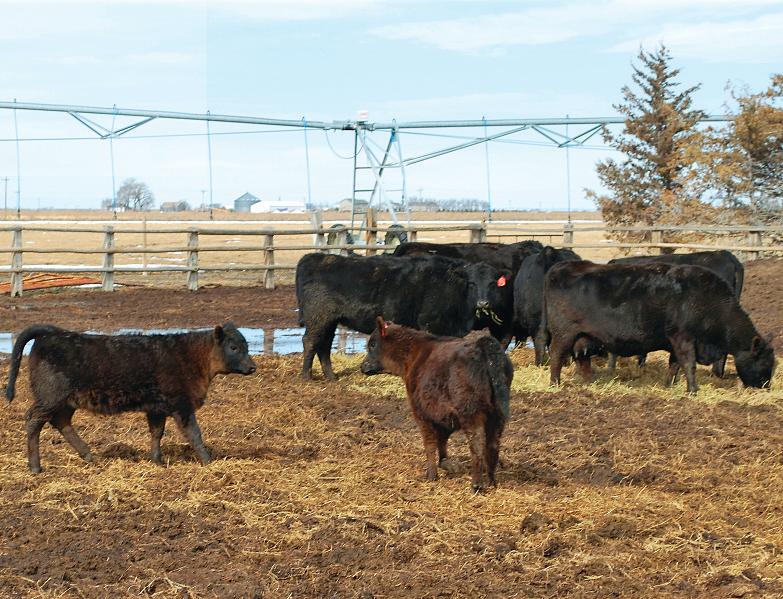
The bull sale lot has male animals being developed for selling back to commercial
producers.
“Cross-breeding is very big,” he said. “This is aonestop shop.”
Like most livestock producers, Yearous’ calendar follows that of his animals.
Calving happens from Januarytomid-April, followed by the cows going out to pastureinmid-to-late-May
The calves areweaned in September to October and
they startgetting fed in their pens.
Once they reach ayear old, the development heifers areput up for sale.
The bull calves he aims to sell in February, he said.
The cows then areeither fed for slaughter or marketed for other feedlots to purchase.
Another thing Duane has to make time for is all the

paperwork that goes with raising purebred, registered Angus seed stock cattle.
“It has become so loaded with paperwork,” he said. “Wehave homework every night, and if you’renot doing it, you’regetting left behind. It is about the details.”
But he concedes that is not much different from most industries.

“The people who arereally
good at it make it look easy,” he said.
Lifelong cattleman
Duane has been acattleman “all my life pretty much.”
While the family may have started with raising primarily sheep, therewerealways cattle somewhereinthe mix, he said.
“It’s our passion,” Duane said.
He said he likes how easily progress can be measured: It is also on display right in front of him in the lots.

“Everyday,it’s achallenge,” he said. “You can easily document whereyou started, how you got there. Youcan usually see at the end of the day what you’ve done.”
He said that while farm and ranching life may seem simplistic and can be that way,italso can be far deeper and as meaningful as the producer wants it to be.
“At the end of the day,the reason you’reout thereisfor the animals,” Duane said. “If you take careofthem, they’ll take careofyou. We live in the greatest countrytobe doing this in.”
Contact Times StaffWriter Jenni Grubbs at jgrubbs@ fmtimes.com, follow @JenniGrubbs on Twitter or check out tout.com/ jennigrubbs
BEEF
from page 15
JenniGrubbs /Fort Morgan Times
Thank Youtoour Ag Community for Supporting Local Businesses Dave PhilliPs FortMorgan Representative Shutters,Wood Blinds, Draperies and more! An Independently Owned and Operated Franchise 7Years IndustrY experIence Office: 970.867.4688 Cell: 970.590.6726 dphillips@budgetblinds.com www.budgetblinds.com SALUTE TO AGRICULTURE •FEBRUARY 28, 2014 •61
Breeding andraising calves, likethe two pictured here Feb. 17, as registered Angus seed stock is alarge partofbusiness at Yearous Cattle Co. southwest of Fort Morgan. Owner Duane Yearous said his cattle farmraises 75 percent seed stock cattle and 25 percent commercial beef cows.
dential market,” the site said. “Graff’sTurfFarms welcomes the opportunity to custom grow any specific blends or mixes of grasses for playing fields, commercial sites, golf courses or stadium projects.”

James Graff, who was recently named commercial vice president of Sports Turf Managers Association, said thereare about 30 sod farms in Colorado and morethan 500 in the United States.

“It’s agood market,” he said. “It’s averydifficult market.”


He said thereisasteady need for the quasi-luxury item that sod is.

While planting grass seed is about two-thirds the cost of purchasing sod, he said, it’s morelabor intensive and requires moretime to develop ausable lawn. Purchasing sod provides instant gratification, not just on professional
sports fields, but also on private lawns that can be in use by families within hours of sod being laid.
And it’s not aone-time purchase, especially for sports fields.
Depending on use, Graff said, aMajor League Baseball stadium will have to have its grass replaced everythree to seven years. That time period is less predictable now that sports fields arenolonger used just for asingle sport. Make the stadium multi-sport and add in concerts and other events and you shorten the life-span of the sod, Graffsaid.
Among the fields Graff’s provides turffor areSports Authority Field at Mile High and Coors Field in Denver; Busch Stadium in St. Louis; Kauffman Stadium in Kansas City,Mo.; Target Field in Minneapolis; Wrigley Field in Chicago; and this year they areadding Comerica Park in

Detroit. They have also provided turffor college fields including Michigan State University and NotreDame University.

For private homeowners, a yardcan last 20 years. But increased use by children and pets can shorten that time period.
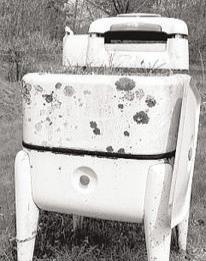
The growing and selling seasons for turfspan about nine months of the year,Graff said.
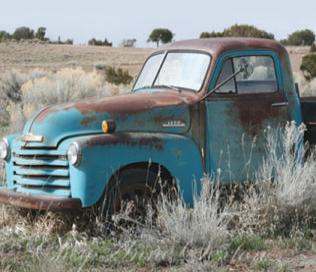
“We’ll be able to startharvesting now,with the ground thawing,” he said.

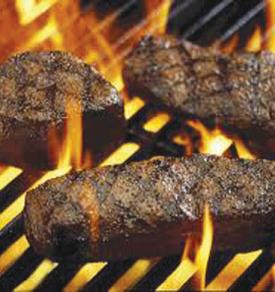

He said averyhigh percentage of the agricultural input at the farmcomes from within Morgan County,and while most of his product is shipped outside of the county, he is able to bring money for those exports into the county. At peak season, Graff’sTurf Farms employees 20 people, mostly from Morgan County, he said.

TURF from page 45
Courtesy photos /Fort Morgan Times
An aerial view of the 420-acre Graff’s Turf Farms. More than 10 types of grass are grown on the property and are sold for use on sports fields, golf courses and residential yards around the country.
405 EChestnut Street Sterling, CO 80751 (970) 522-5242 WWW.FLEMINCAUTOSALE.COM Conveniently Located On Hwy,6InStarting AUTO SALES See Us For Your Next Car or Truck 1409 Barlow Rd. Fort Morgan, CO We have stovesand much, much more! NEED AN UPGRADE? NEED AN UPGRADE? FREE LOCAL DELIVERY! 970-867-2476 502 Ensign, Fort Morgan 62 • SALUTE TO AGRICULTURE •FEBRUARY 28, 2014
James Graff and Marty Thiel, co-ownersof Graff’s Turf FarmsinMorgan County, stand on one of the professional sports fields theyprovided turf for.




“You Call, We Haul” 21215 Hwy 52, Fort Morgan 970-867-8074 SALUTE TO AGRICULTURE •FEBRUARY 28, 2014 •63
page 36
an inoculant was $56.65 an acre, but that was morethan offset by increased revenue with abetter yield. Overall, the grower had $21.35 in net benefits from ahigher price for high-protein wheat and addition of nitrogen to the land, Waller explained.


This kind of cover crop is easy to manage and offers quick benefits, he said.
One producer was concerned that such cover crops
KRAFT from page 21
would use too much of the limited water that Northeast Colorado growers have available.

Waller reiterated that the water cost was minimal.
He also asked producers to look at the cost to the soil of taking cornresidue out of their fields to use for cattle feed.
Finally,Waller said that growers should get biology to work for them and reap the returnoninvestment.
“In order to make milk, we have to have offspring,” she said. “We’rein the business of making babies.”
As such, the dairyhas a full nurseryfacility to care for the calves.
On any given day,there may be 700 “babies on the bottle” in the nursery, Kraft said.
They also have a“cow hospital” on site, she said, to carefor sick cows and calves.
To prevent them from getting sick, the workers follow strict hygiene processes both for cleaning the cows’ teats to ensuregerms do not get into the milk and for caring for the animals in general. They also have regular observation duties to ensurethe cows arenot ill so diseases cannot spread,
she said.
What the dairydoes not have is bulls, she said, because the large, aggressive animals can cause problems for the workers that lead to injuries.
“We’retrying to make surethe animals and people have the best quality of life possible,” she said.
The cows get their food from lots of sources, which aremixed together in aspecial mixing truck machine that they call the “Cow’s Kitchen,” she said.
“I think the cows eat better than Ido,” she quipped, chuckling.
All the silage cornand hay Quail Ridge Dairyfeeds its cows is locally grown, including cornfromKeith Bath Farms, Kraft said.
The feed mixturealso contains various byprod-
ucts, like whole cotton seed with the fibers removed, wet brewers’ grains leftover from production at an Anheuser-Busch facility, corngluten feed leftover from making soda pop and drydistillers’ grain leftover from making ethanol.
Kraft said she is proud of being able to use all of these byproducts, instead of them going to waste.
The little girl who thought she would never become a dairyfarmer has done just that, and now she does with abig smile and can’t wait to tell people all about the job and business she loves.
Contact Times StaffWriter Jenni Grubbs at jgrubbs@ fmtimes.com, follow @JenniGrubbs on Twitter or check out tout.com/ jennigrubbs
SOIL HEALTH from
Mr.D’s Ace Home Center &Farm and Ranch Dave Lebsock -Owner Mr.D’s in Brush 122 Custer St. Brush CO 80723 •(970) 842-2879 Lebsock Feed and Seed 401 S. Front St. Sterling CO 80751 •(970) 522-3432 Mr.D’s in Sterling 1350 W. Main St. Sterling CO 80751 •(970) 522-5104 Mr.D’s in Fort Morgan 1000 E. Platte Ave. Fort Morgan CO 80701 •(970) 867-3303 We Have All YouNeed From Fencing Supplies To Feed 502 Central Avenue 970-483-7334 Hometown Service on aHigher Plain. 64 • SALUTE TO AGRICULTURE •FEBRUARY 28, 2014
“In
order to make milk, we have to have offspring. We’reinthe business of making babies.” Quail Ridge Dairyowner MaryKraft
HISTORIC from page 55
Settled in 1885, awarded in 1988.
•A.H. Tetsell Farm/ Ranch, Sterling. Settled in 1885, awarded in 1992.

•Benson Homestead, Sterling. Settled in 1910, awarded in 2010.
Centennial Farms designees arehonored each year at the Colorado State Fair. For moreinformation on the program, visit http:// bit.ly/1fhZtmP


Contact Journal-Advocate managing editor Sara Waite at 970-526-9310 or swaite@ journal-advocate.com



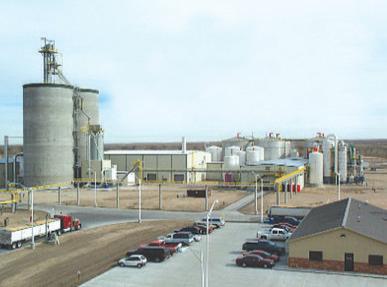
“People from across America marveled that so many others had come to agathering where many werestrangers. They came to aconsensus that people had come because families matter.They arethe foundation of civilization. Their children arethe hope of the future. And they felt pretty proud of themselves, by golly.”
passage from abook at the Overland Trail Museum’s High Plains Education Center celebrating ranching
The Centennial Farmsand Historic Ranches exhibit at the Overland Trail Museum features a photo of the Fred Grauberger homestead near LeRoy, taken June 7, 1905.
Sara Waite / Sterling Journal-Advocate
Partners in Agriculture Since 2005 LearnMore at: www.sterlingethanol.com We Have Hard To Find Parts 1025 E. Platte Fort Morgan (970) 867-2535 Parts Smart CarQuest SALUTE TO AGRICULTURE •FEBRUARY 28, 2014 •65


WWW.KORFAUTOGROUP.COM Your Hometown Dealer for 36 Years Fully Stocked Parts Department All Technicians areFactory and ASE trained and can meet all of your automotive service needs 66 • SALUTE TO AGRICULTURE •FEBRUARY 28, 2014







Your Partner InAgriculture Locations: •Holyoke (970) 854-2254 •Haxtun (970) 774-6166 •Amherst (970) 854-3141 •Fleming (970) 265-2675 •Julesburg(970) 474-2479 •New Haven(970) 265-2751 •Stateline (970) 854-3161
CARGILL IN COLORADO
#9 Cargill Specialty Canola Oils –Fort Collins
#10 Cargill Metals –Fort Collins
#2 Cargill Feed &Nutrition –Sterling
1. Cargill Beef –Fort Morgan
One of Cargill Beef’s nine production and fabrication facilities throughout the United States and Canada, including four dedicated regional beef facilities, Fort Morgan employs over 2,100 people and processes on average 4,800 head of cattle aday.Our primaryproduct is boxed beef, which consists of large, wholesale cuts of meat that are vacuum packed and boxed for chilled shipment to retailers, foodservice operators and manufacturers both domestically and abroad. We also produce ground beef.
2. Cargill Feed &Nutrition –Sterling
Cargill Feed &Nutrition develops, manufactures and markets abroad range of animal feeds and



































customized animal nutrition solutions direct to producers and through dealers in more than 25 countries. Cargill Feed &Nutrition sells branded products in the aqua, beef, dairy, poultry, pork and pet food segments.
3. Cargill Cattle Feeders –Yuma


We own and operate feedlots, allowing us to maintain aquality cattle supply year-round, while giving us the live animals for our research efforts. Can feed 54,000 head of cattle.
4. Cargill AgHorizons –Holly,Lamar, Limon, Sheridan Lake, Arapahoe, Aurora, Burlington, Byers, Cheyenne Wells, Cope, Granada

Cargill AgHorizons operates grain elevators and farm service centers handling commodities such as corn, wheat and soybeans. Additionally,some farm service centers sell seed, bulk fertilizer, crop protection products and custom crop
#5 Cargill Food Distribution –Denver,Aurora
Employees: 2,100


#7 Cargill Beef/ Pork Sales Office –Englewood


#3 Cargill Cattle Feeders –Yuma
Purchased: 2007
Employees: 35
application services. These facilities serve farm customers, ethanol companies, feed mills and food further processors.
5. Cargill Food Distribution –Denver,Aurora
Cargill Food Distribution is an entrepreneurial perishable protein distributor,focused on delivering distinctive value by creating customer solutions to strategic markets. CFD’s core business is merchandising Cargill Meat Solutions beef, pork and turkey products for use in foodservice, retail, and manufacturing processes.
6. Malt –Littleton, Aurora
As one of the world’slargest maltsters, Cargill is your source for domestic and imported bulk malt and specialty malts. Our unparalleled selection includes base malts, specialty brewers malts, diastatic malts and distillers malt, augmented by
filter aids, adjuncts and sorghum syrup. Cargill is more than amalt supplier,Cargill is your partner in brewing the world’sbest brews.
7 Cargill Beef/Pork Sales Office –Englewood
The Denver sales office is regionally located to provide responsive customer service and allow for the development of close relationships with the customers we serve.

8. Future Site of Cargill Steel –Windsor
Cargill will build its eighth U.S. steel processing center to help meet the increasing demands for steel products in the manufacturing and shale oil industries. The plant will process various types of steel for customers in 15 western and Midwestern states. It will also serve as a distribution center for steel product produced at Cargill’sGranite City,Ill., facilities and at its Port of Catoosa, Okla., facility
9. Cargill Specialty Canola Oils –Fort Collins
The Cargill Specialty Seeds and Oils Innovation Center,located in Fort Collins is acenter for research and development of next-generation Clear Valley™ canola oils. Scientists at the center focus on the discovery, development and deliveryofhigh-stability oils with reduced saturates and zero trans fats per serving.
Cargill first opened adistribution depot in Colorado in 2011. We provide physical and financial solutions for raw steel materials and semi-finished steel products. Our customers range from local family businesses to multinational construction, fabrication, machinery, transportation, oil and gas, and steel distribution companies.
For career opportunities with Cargill, please visit www.cargill.com/careers Windsor
Cope Sheridan
YUMA
Lake Holly Granada
#8 Future Site of Cargill Steel –Windsor
#1 Cargill Beef –Fort Morgan Opened: 1987
10. Cargill Metals –Fort Collins
Fort Morgan 1C ill BfF tM ser f
#6 Malt –Littleton, Aurora
Boulder Longmont Greeley Loveland Broomfield Arvada Lakewood 5 5 4 1 8 3 2 4 4 4 4 4 4 4 4 10 9 7 6
#4 Cargill AgHorizons –Holly,Lamar, Limon, Sheridan Lake, Arapahoe, Aurora, Burlington, Byers, Cheyenne Wells, Cope, Granada











































































































































































 By Dan Barker Times News Editor
By Dan Barker Times News Editor












































 By Erin Nielsen Journal-Advocate intern
By Erin Nielsen Journal-Advocate intern
















 By Jenni Grubbs Times Staff Writer
By Jenni Grubbs Times Staff Writer












 By Sara Waite Journal-Advocate managing editor
By Sara Waite Journal-Advocate managing editor





 By Sara Waite Journal-Advocate managing editor
By Sara Waite Journal-Advocate managing editor








 Courtesy photo
Courtesy photo






















































































